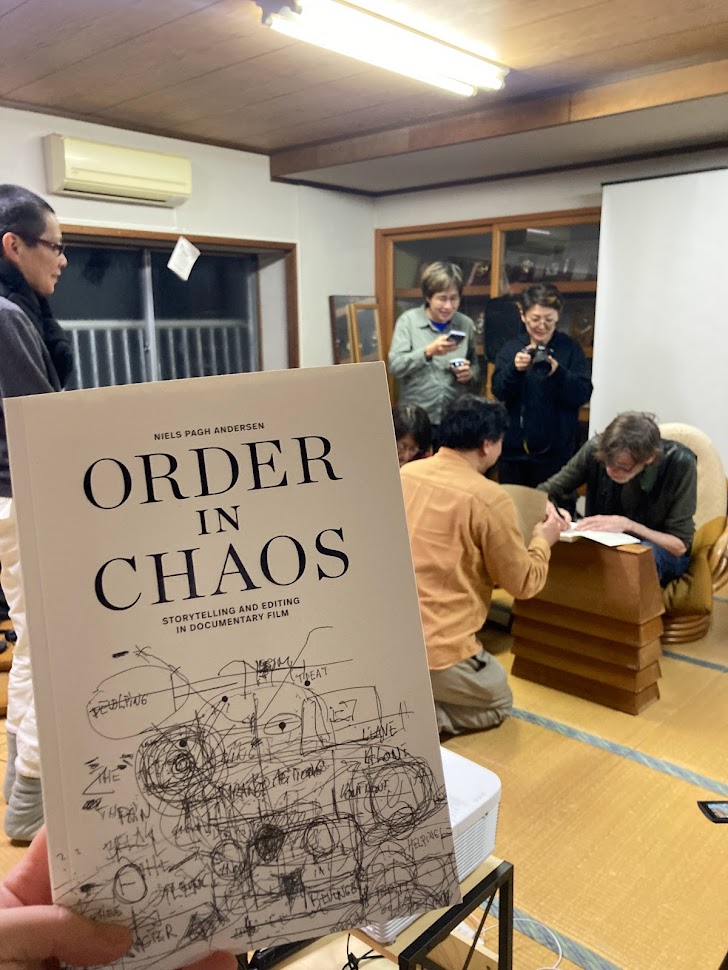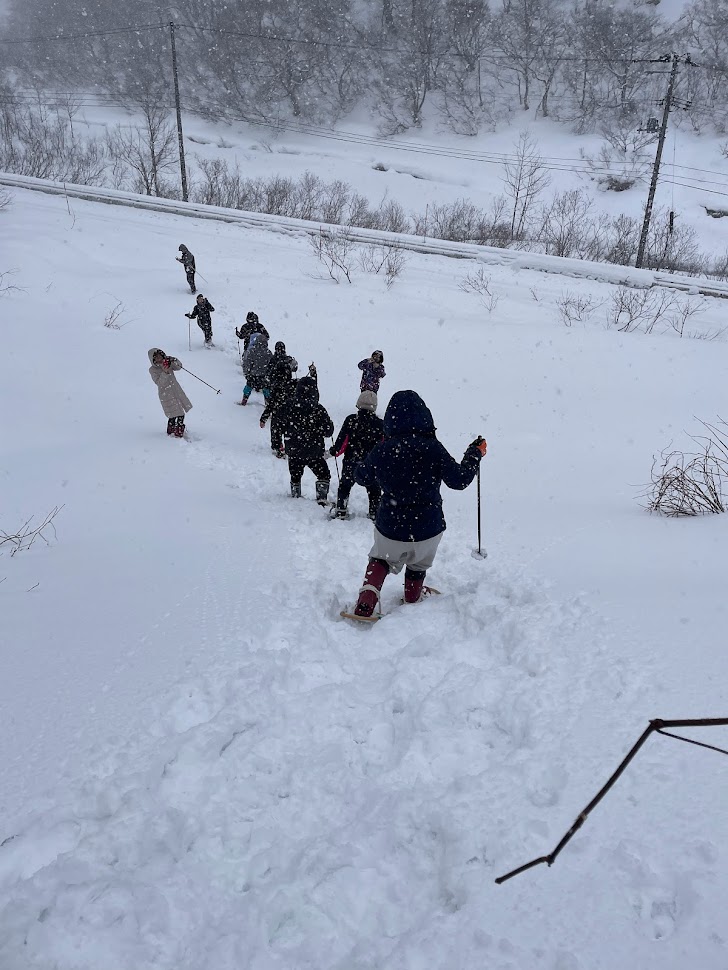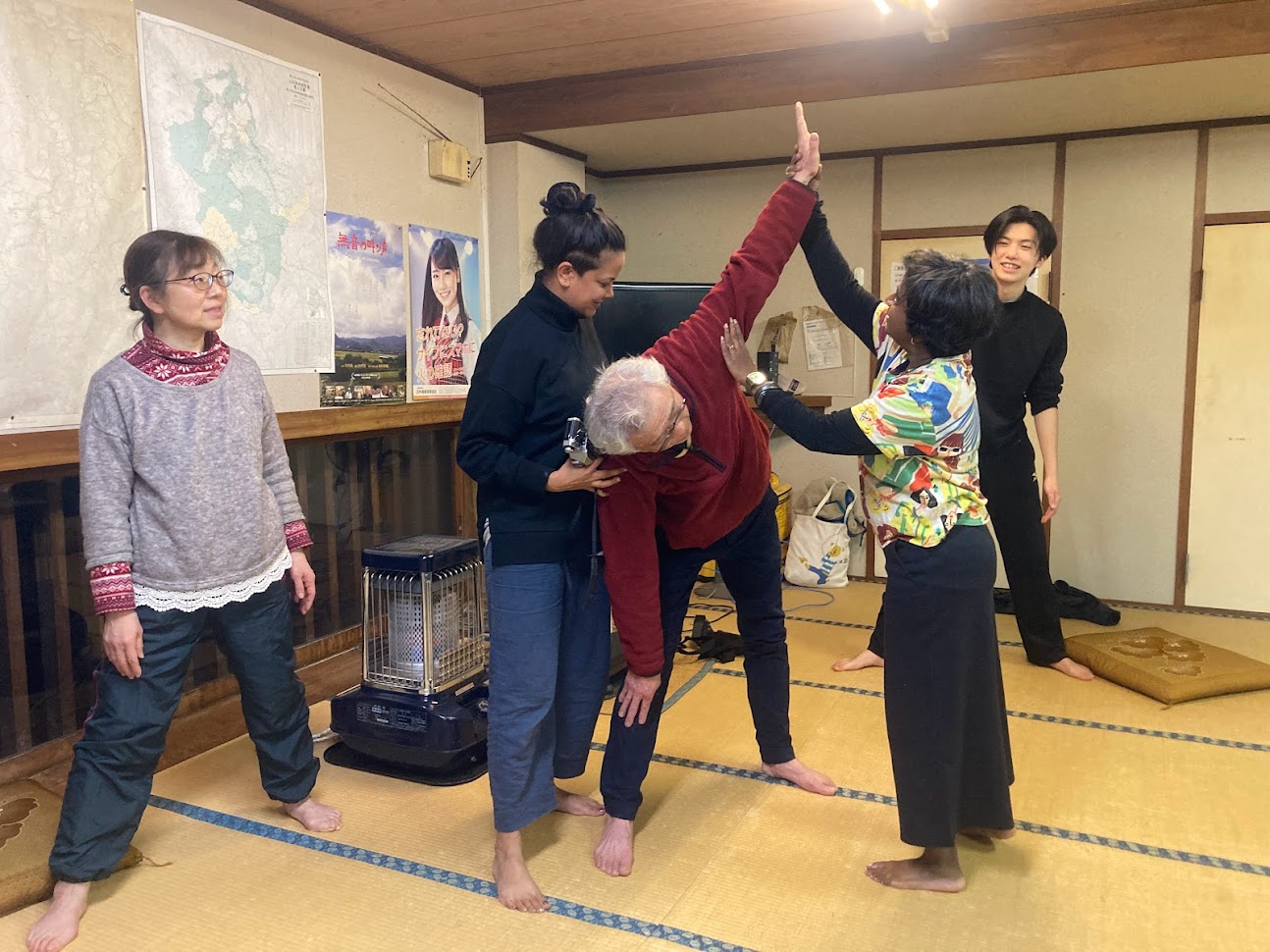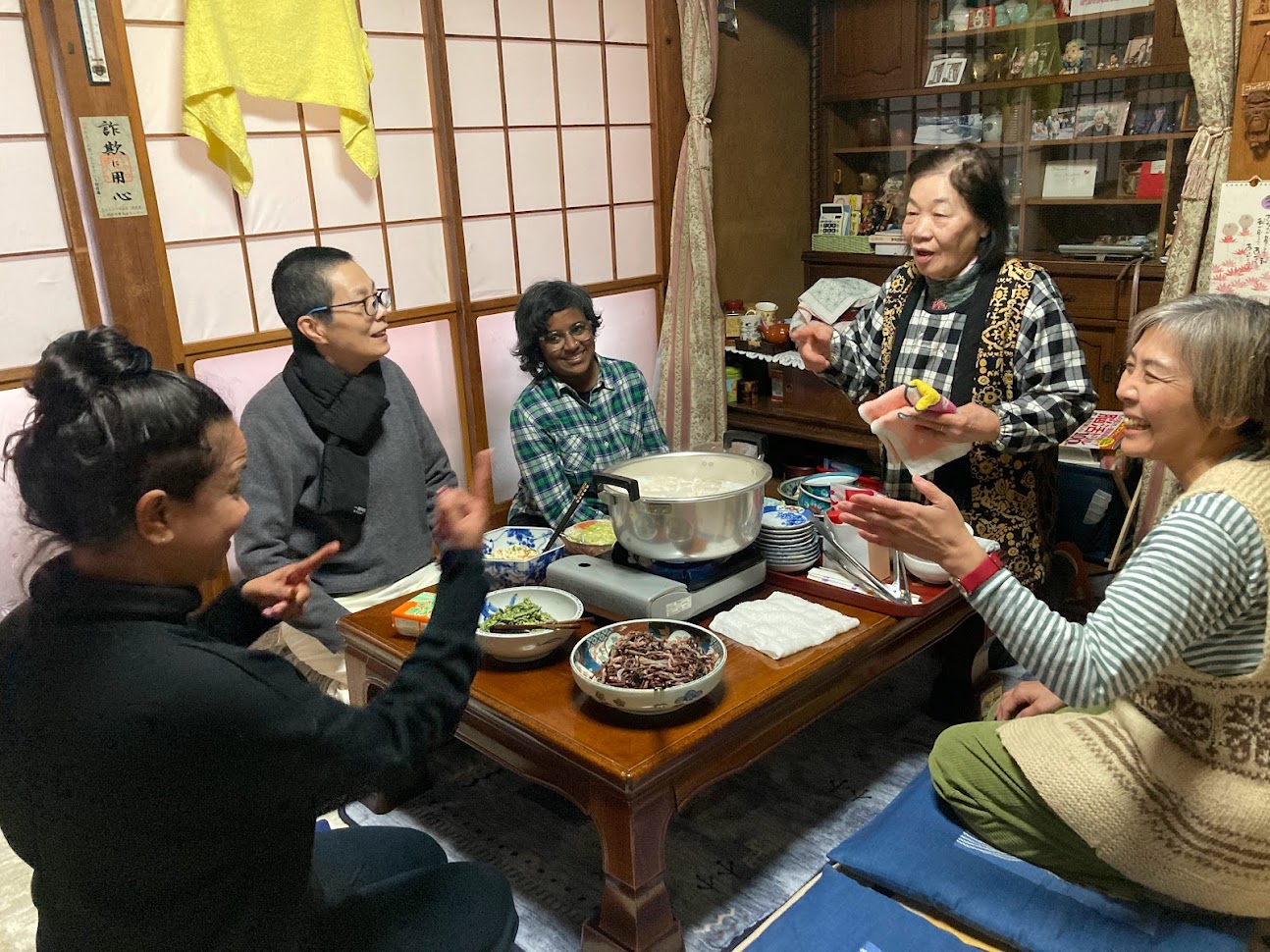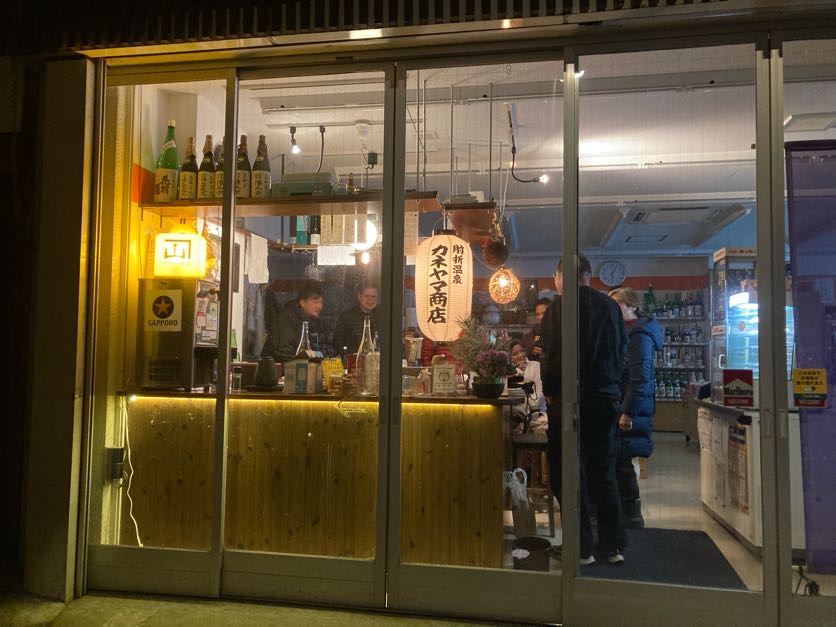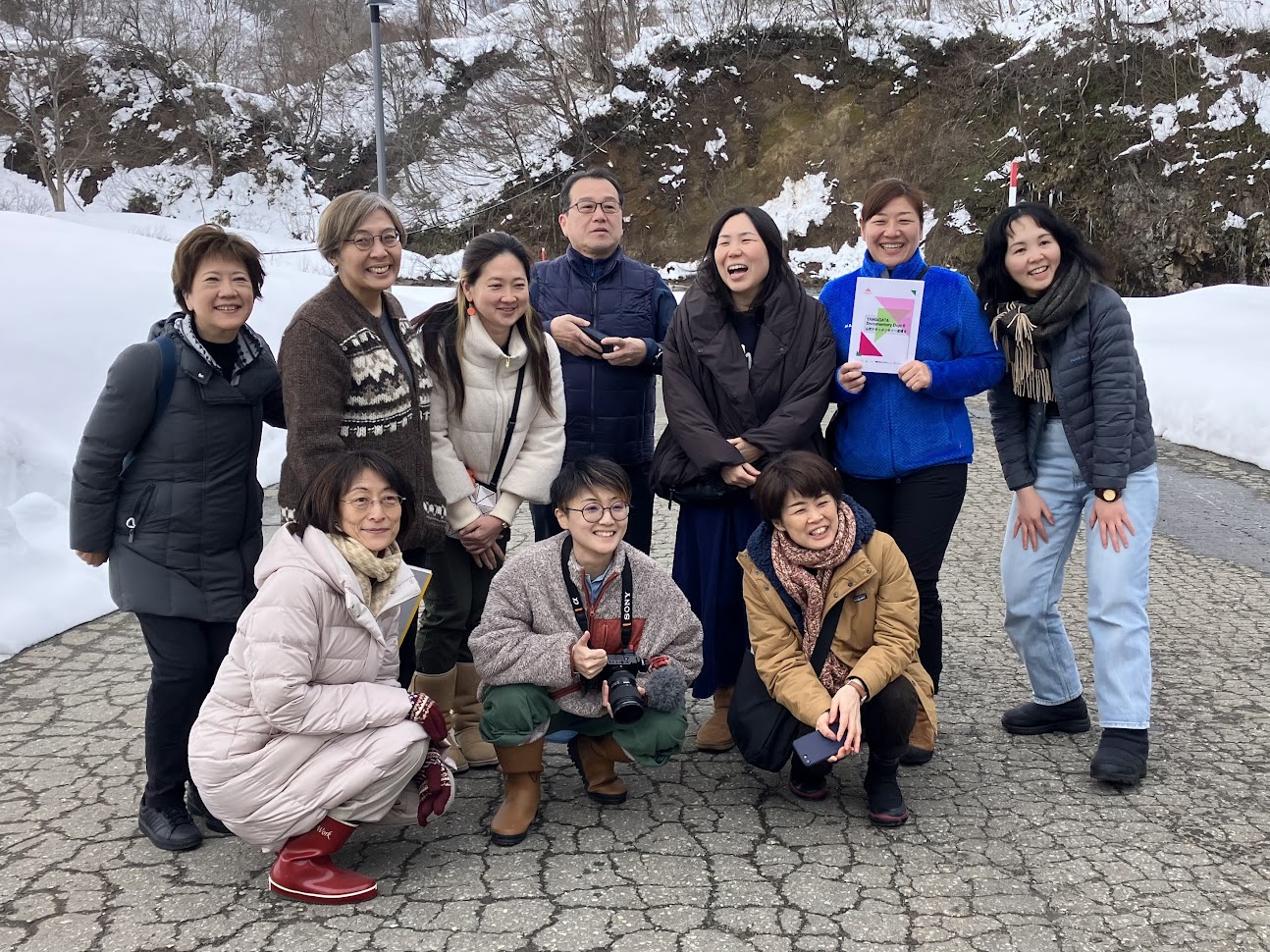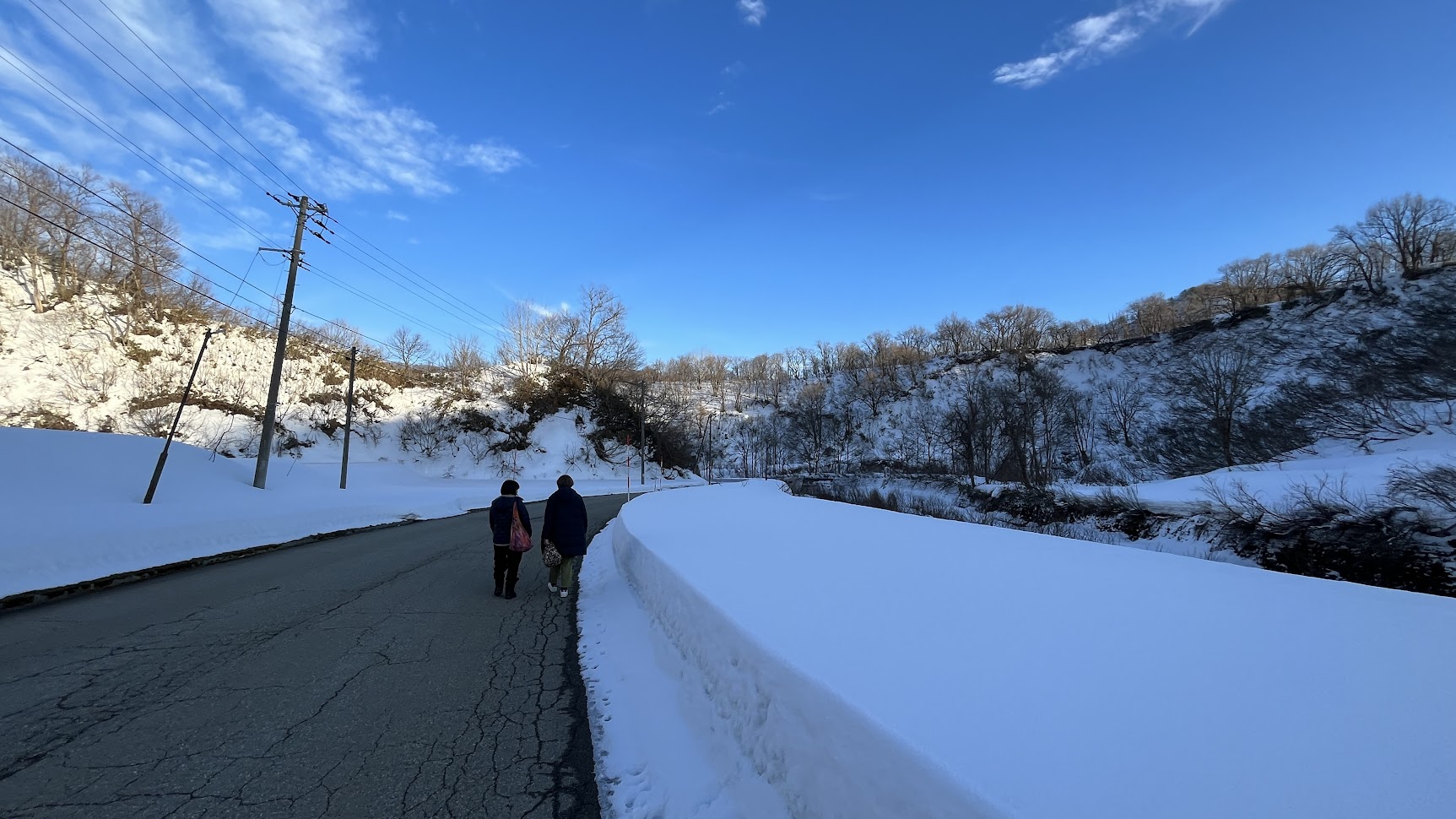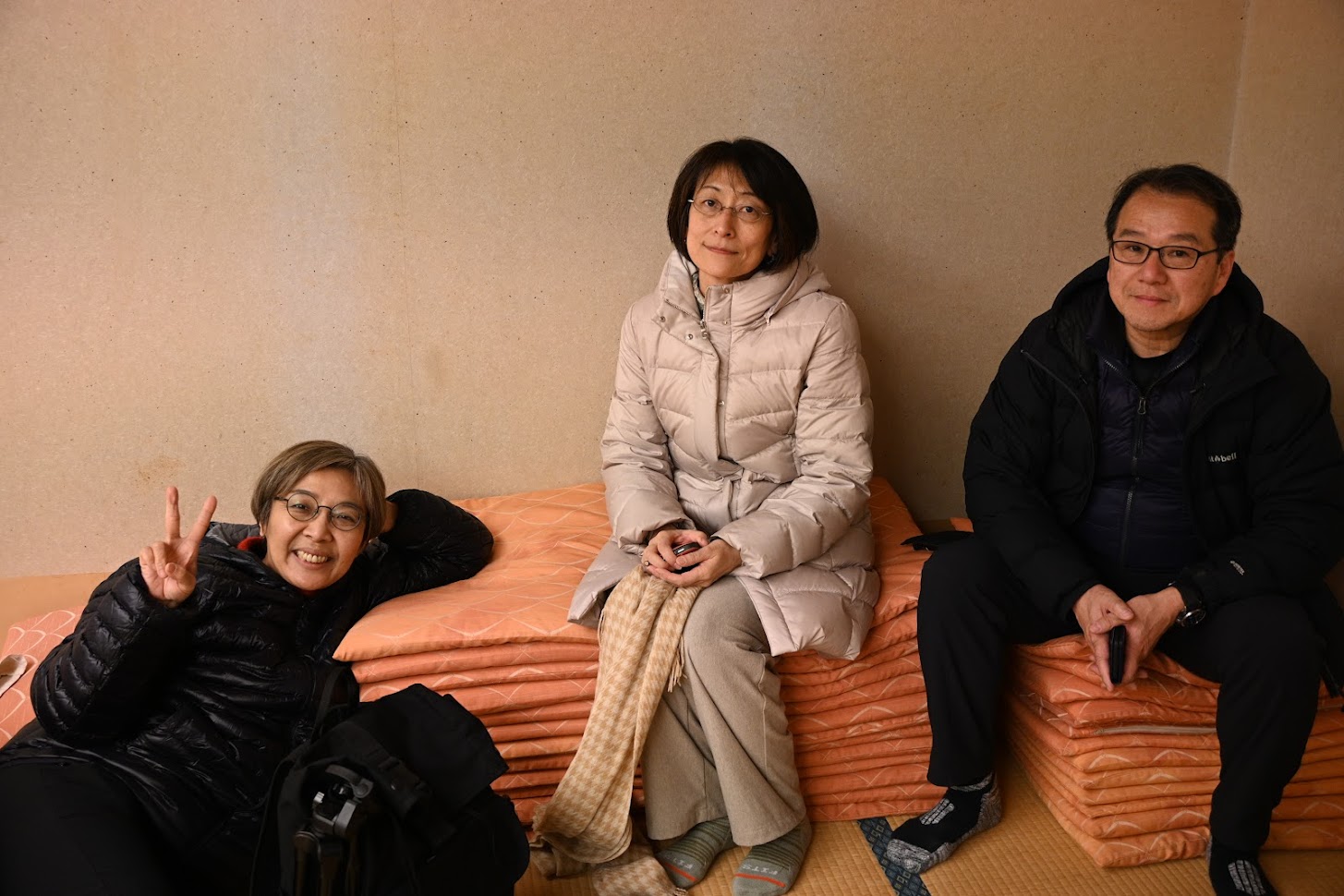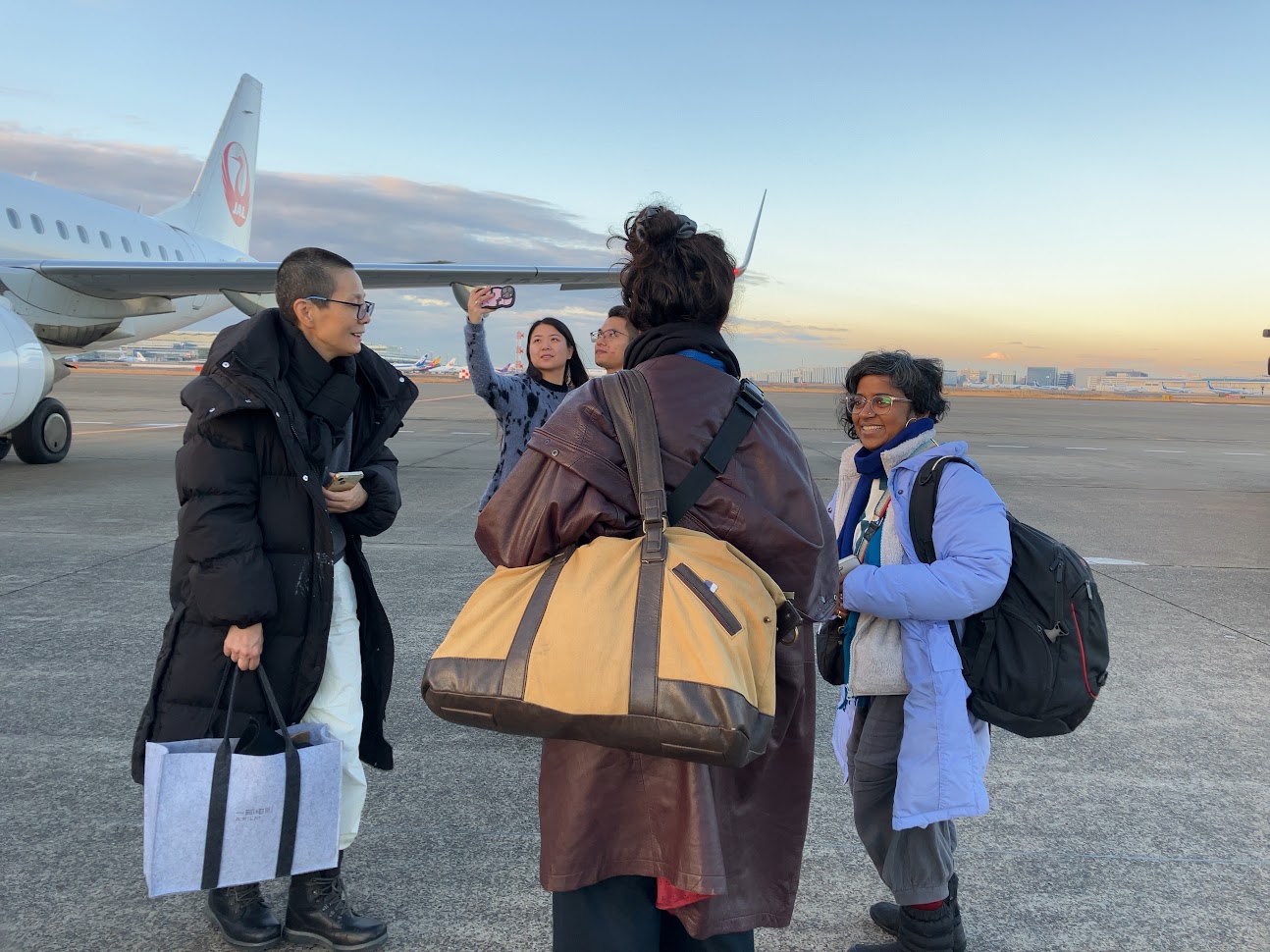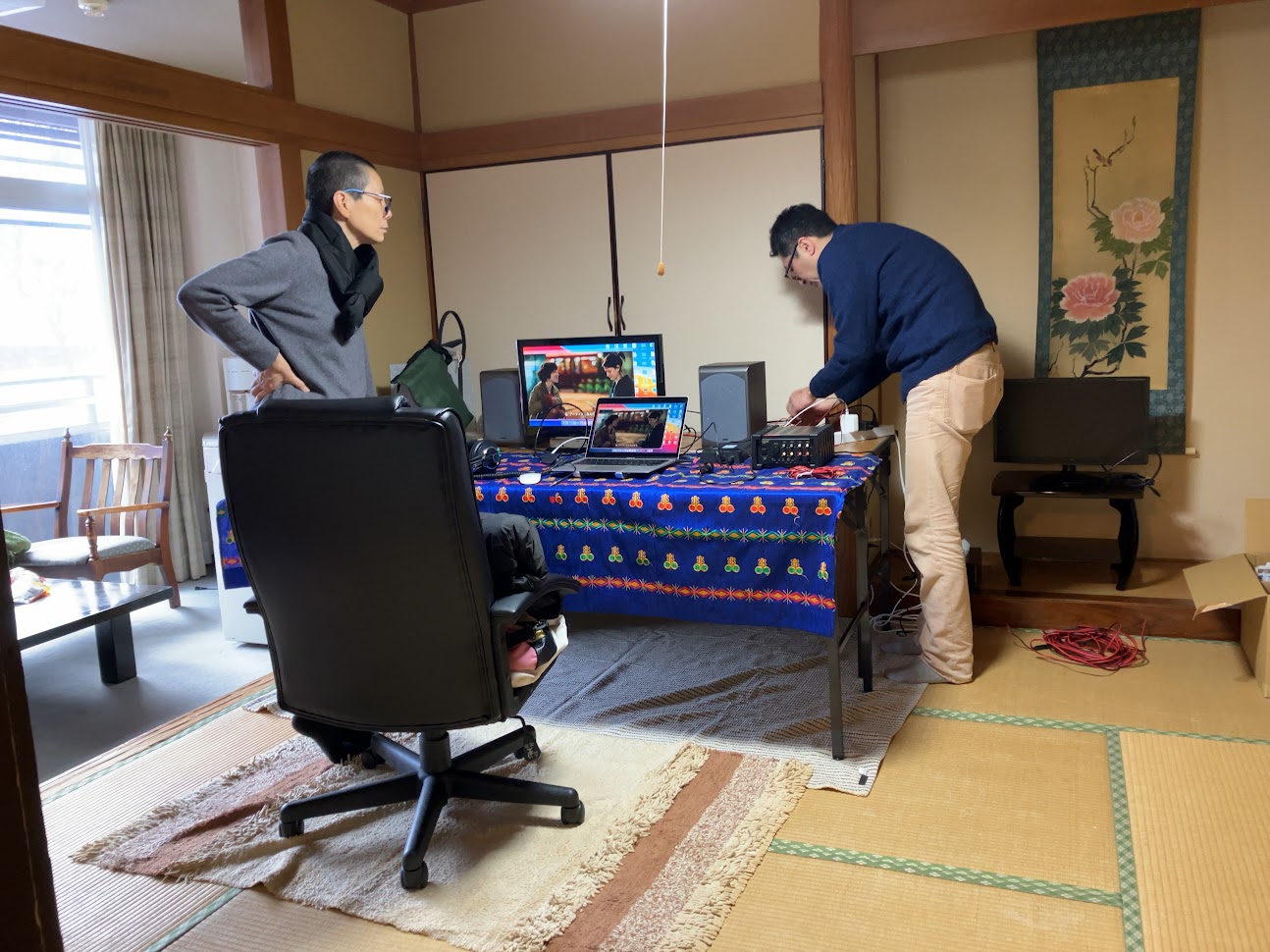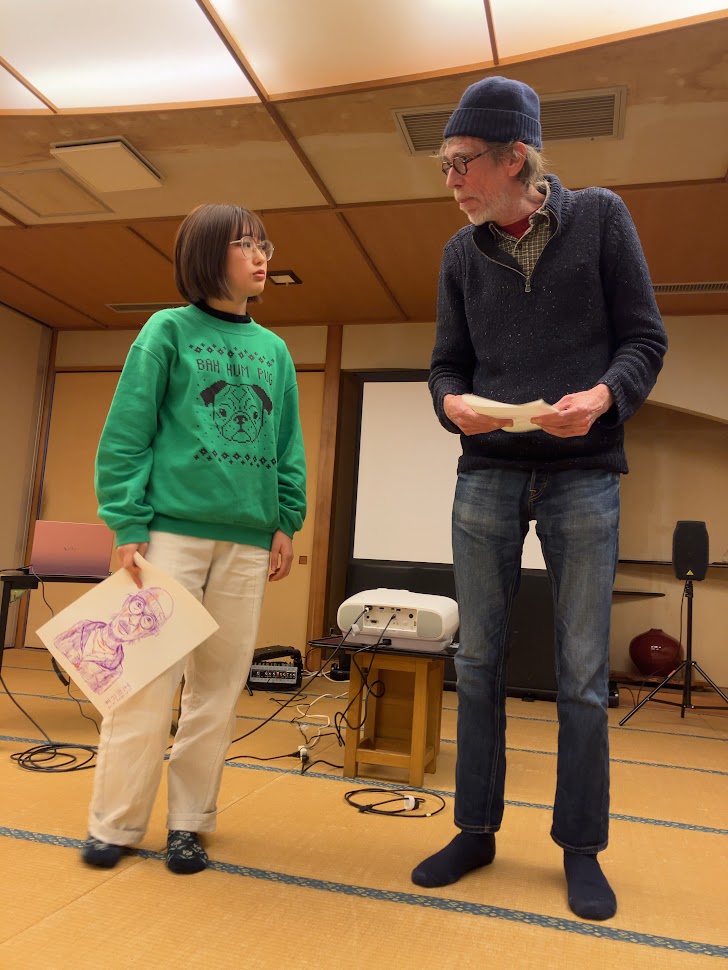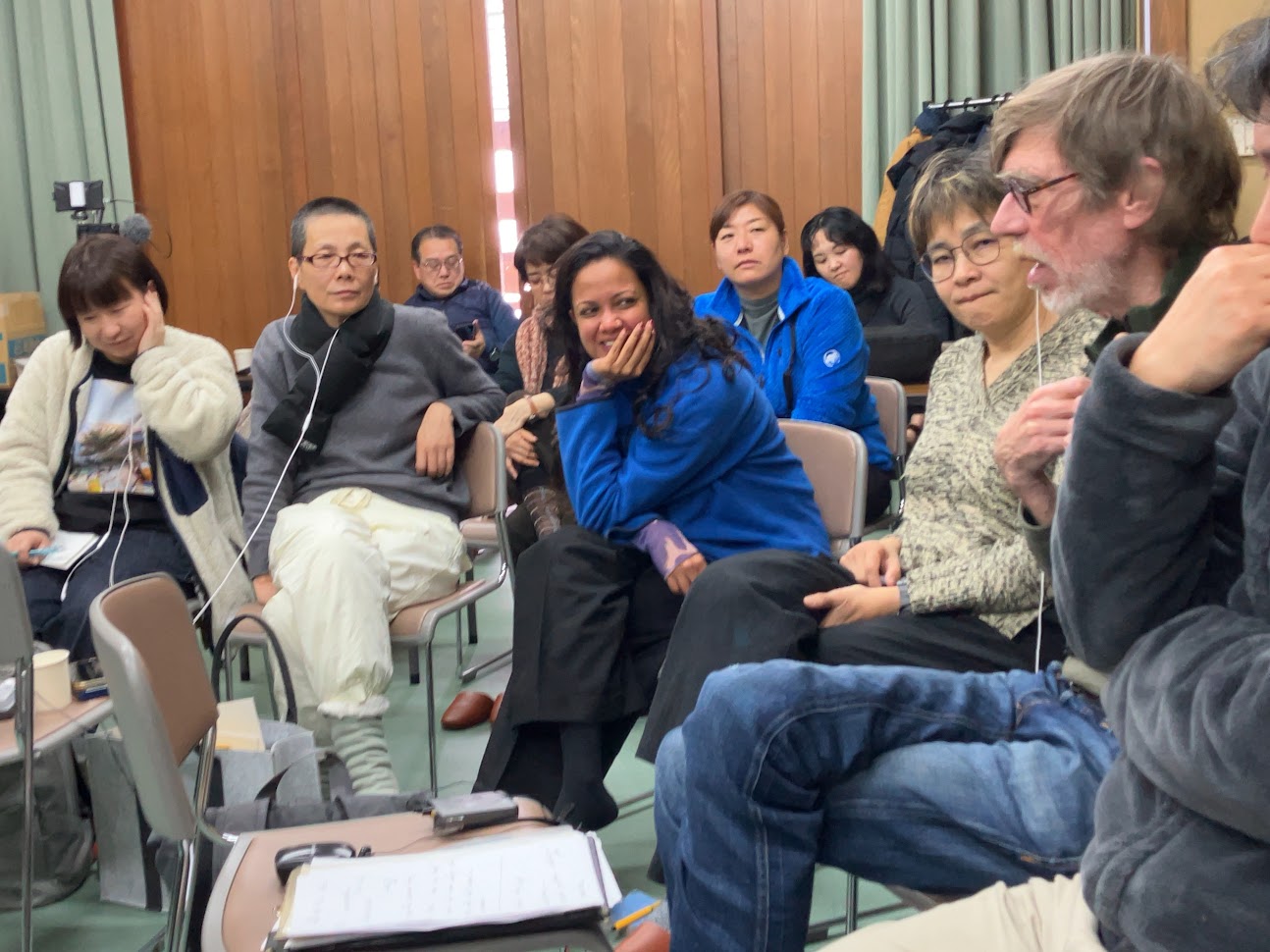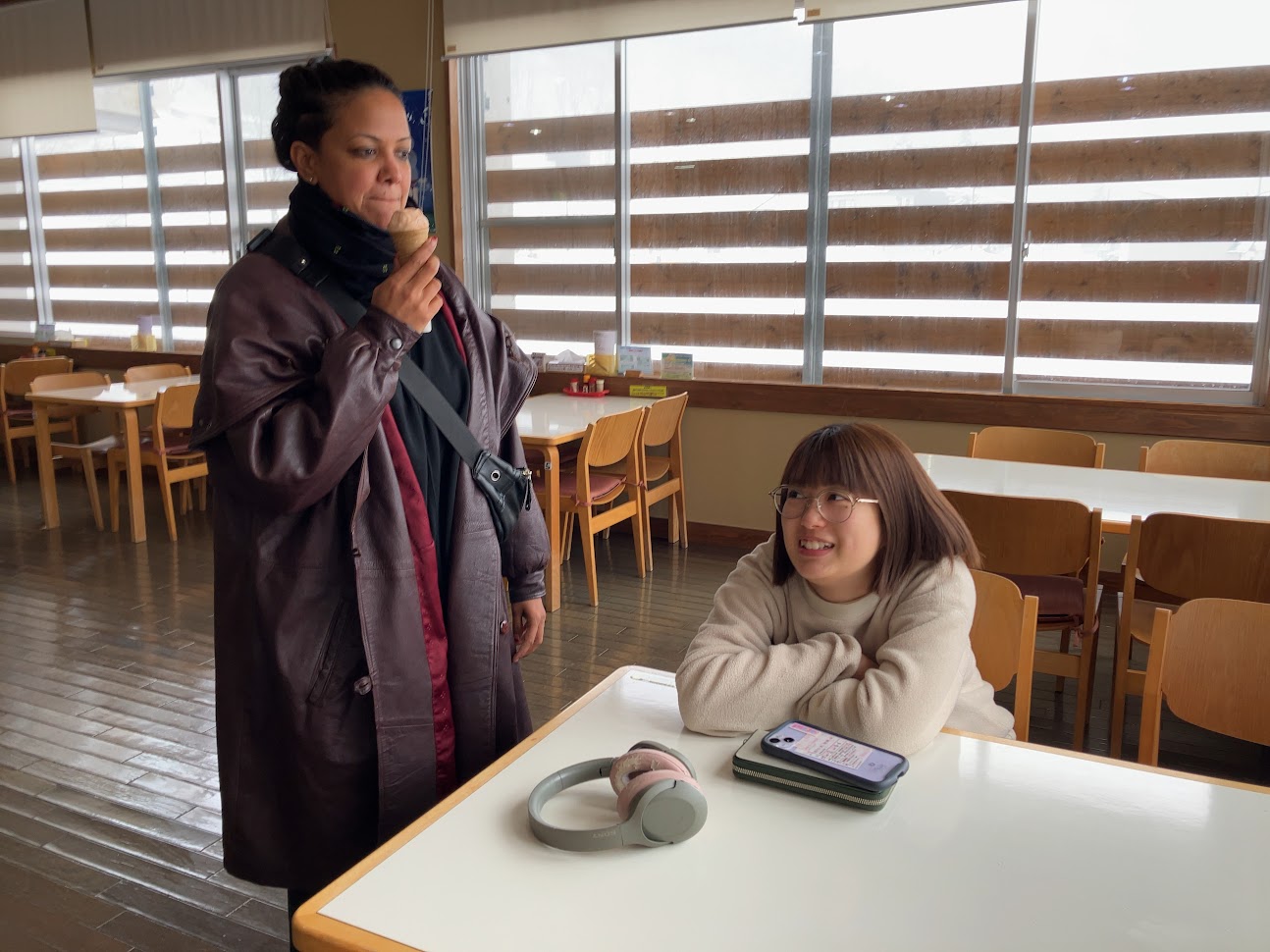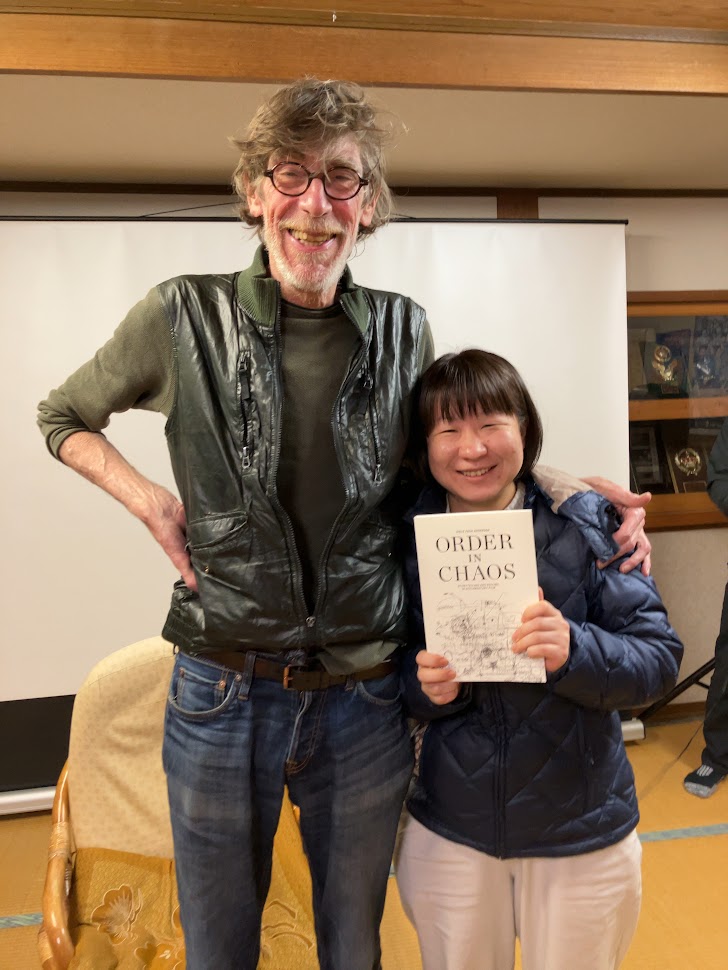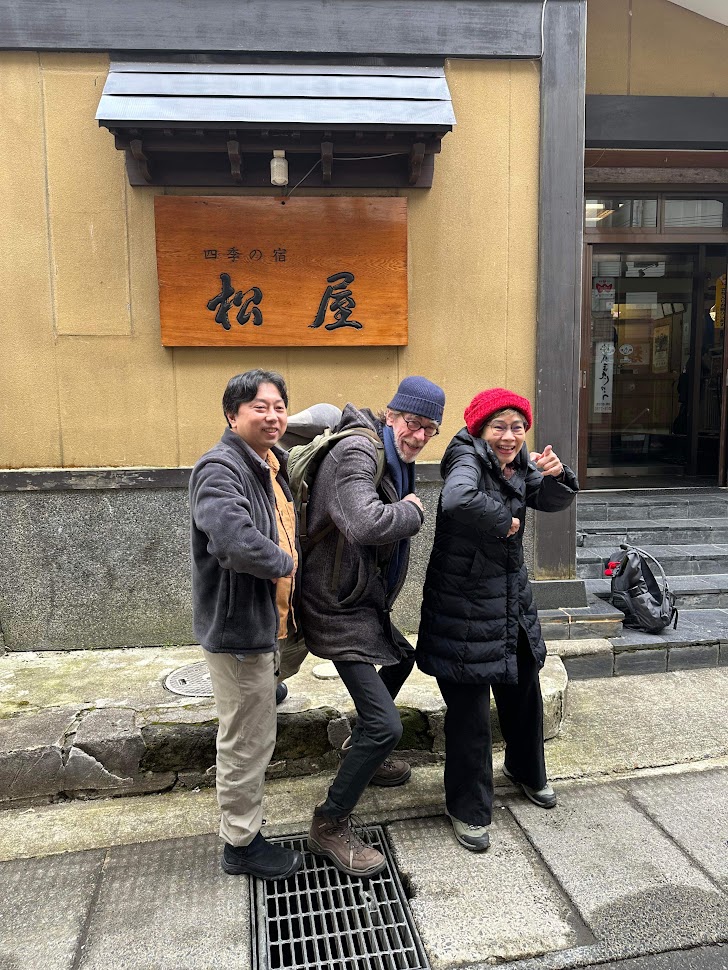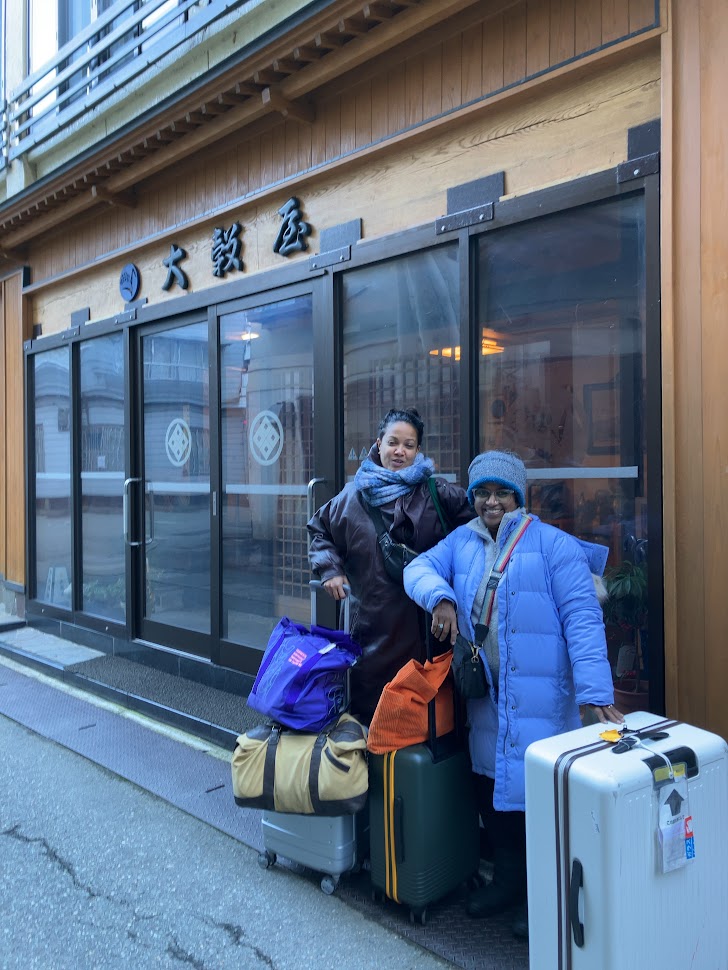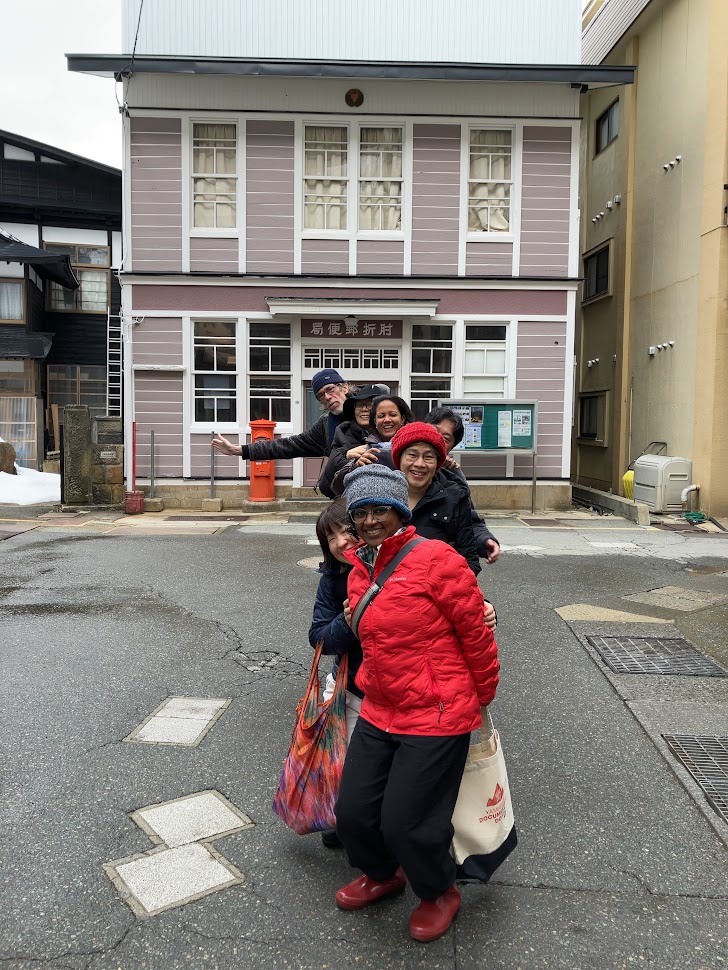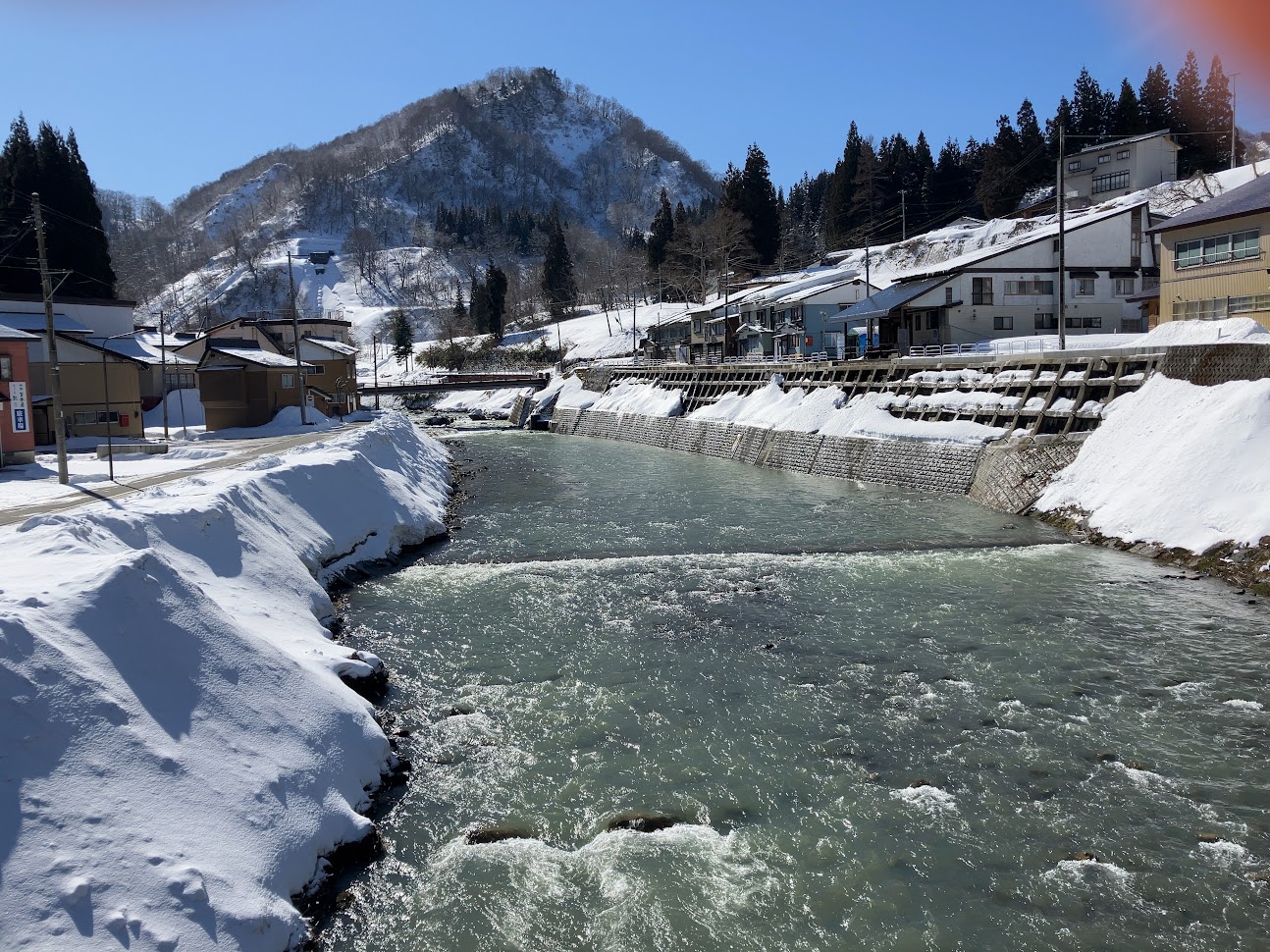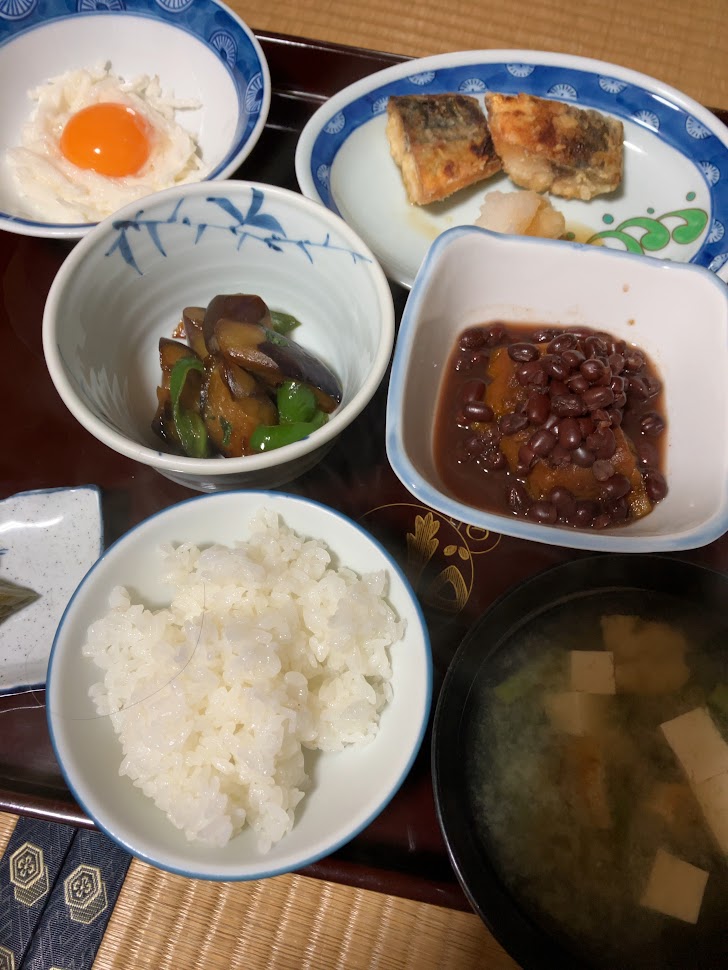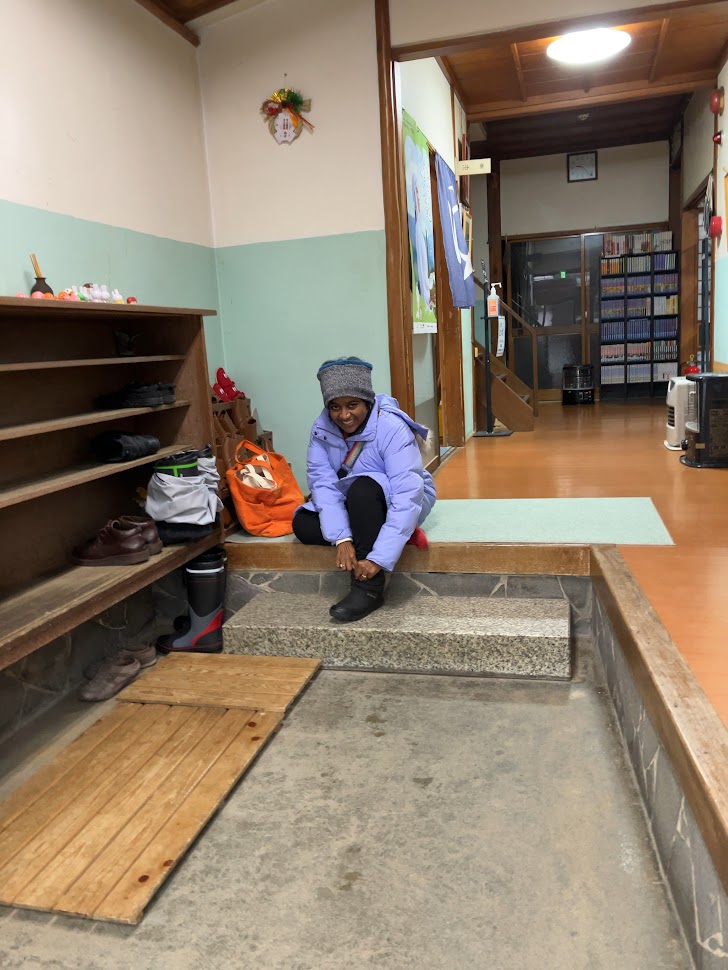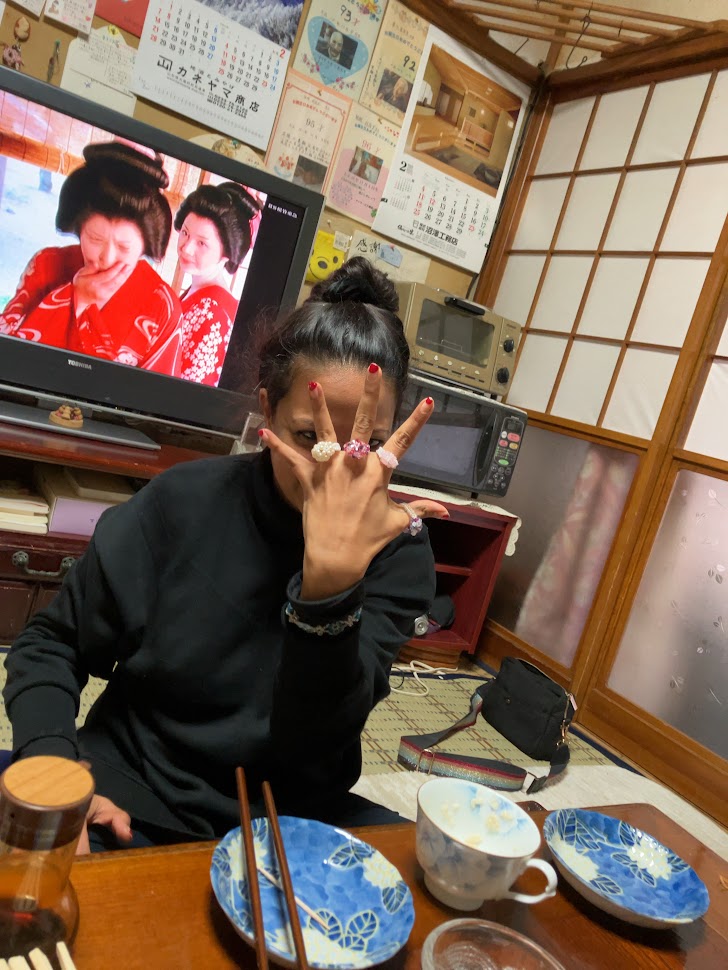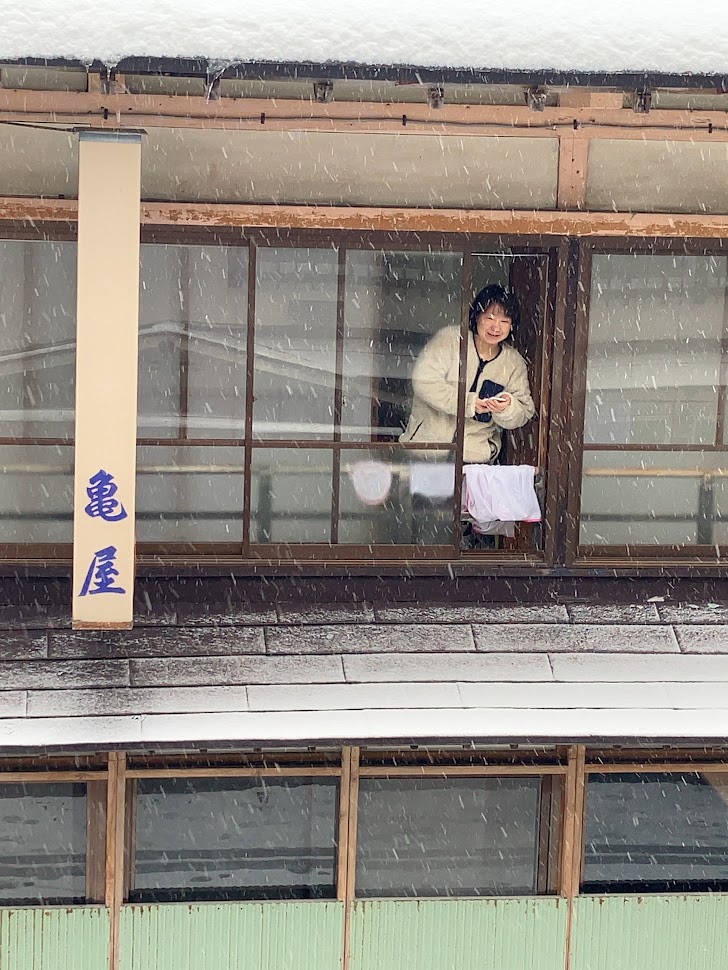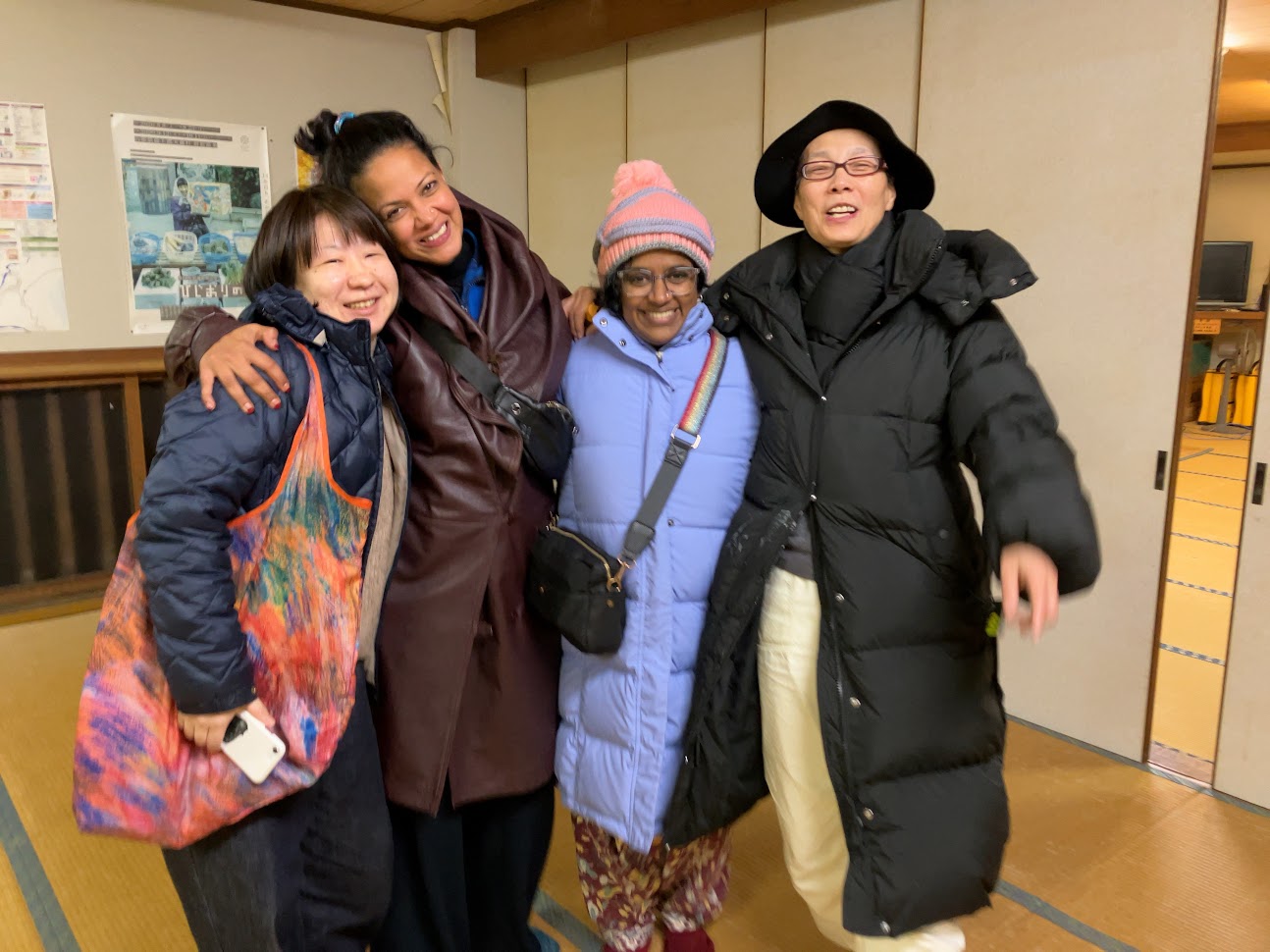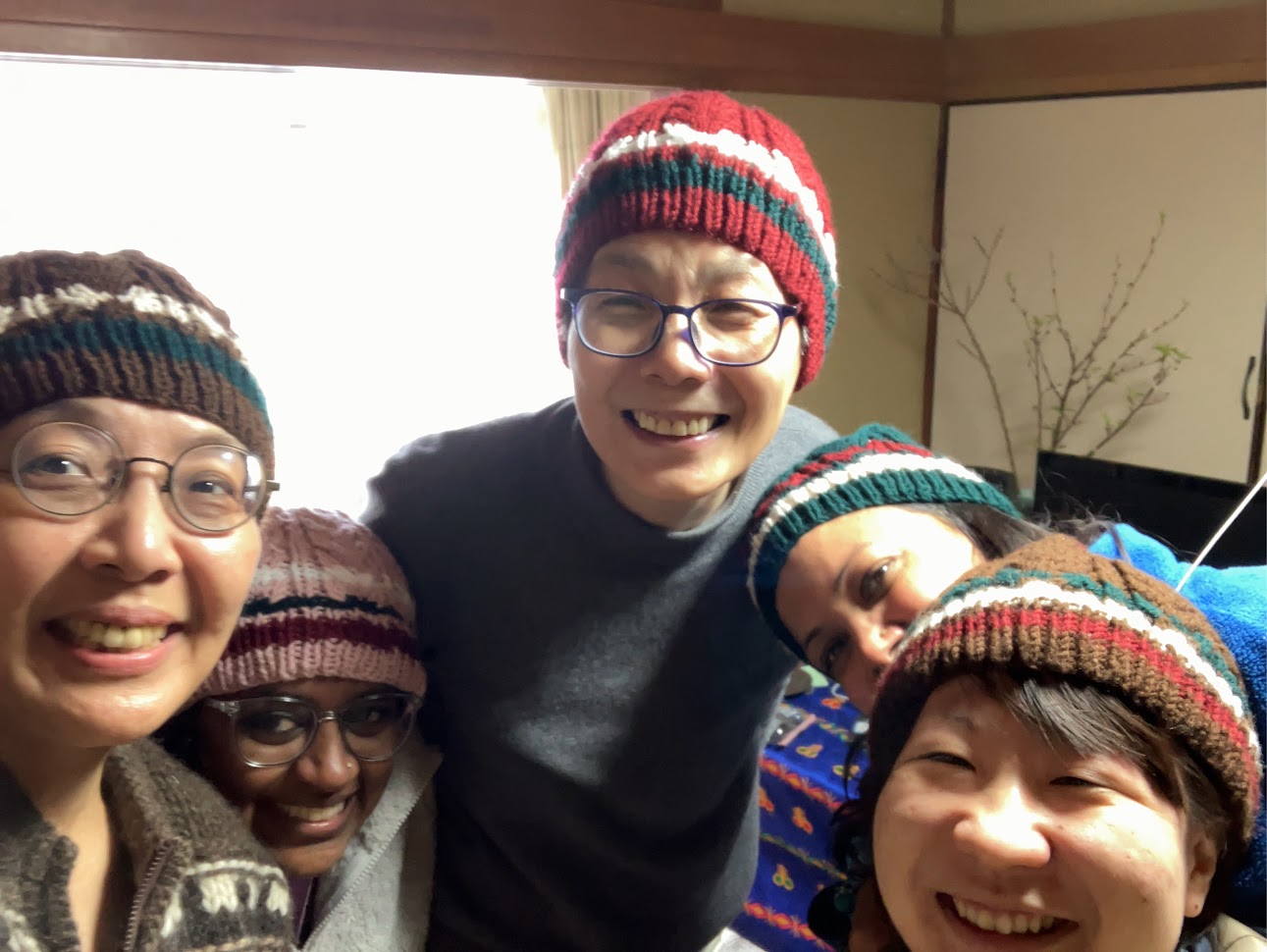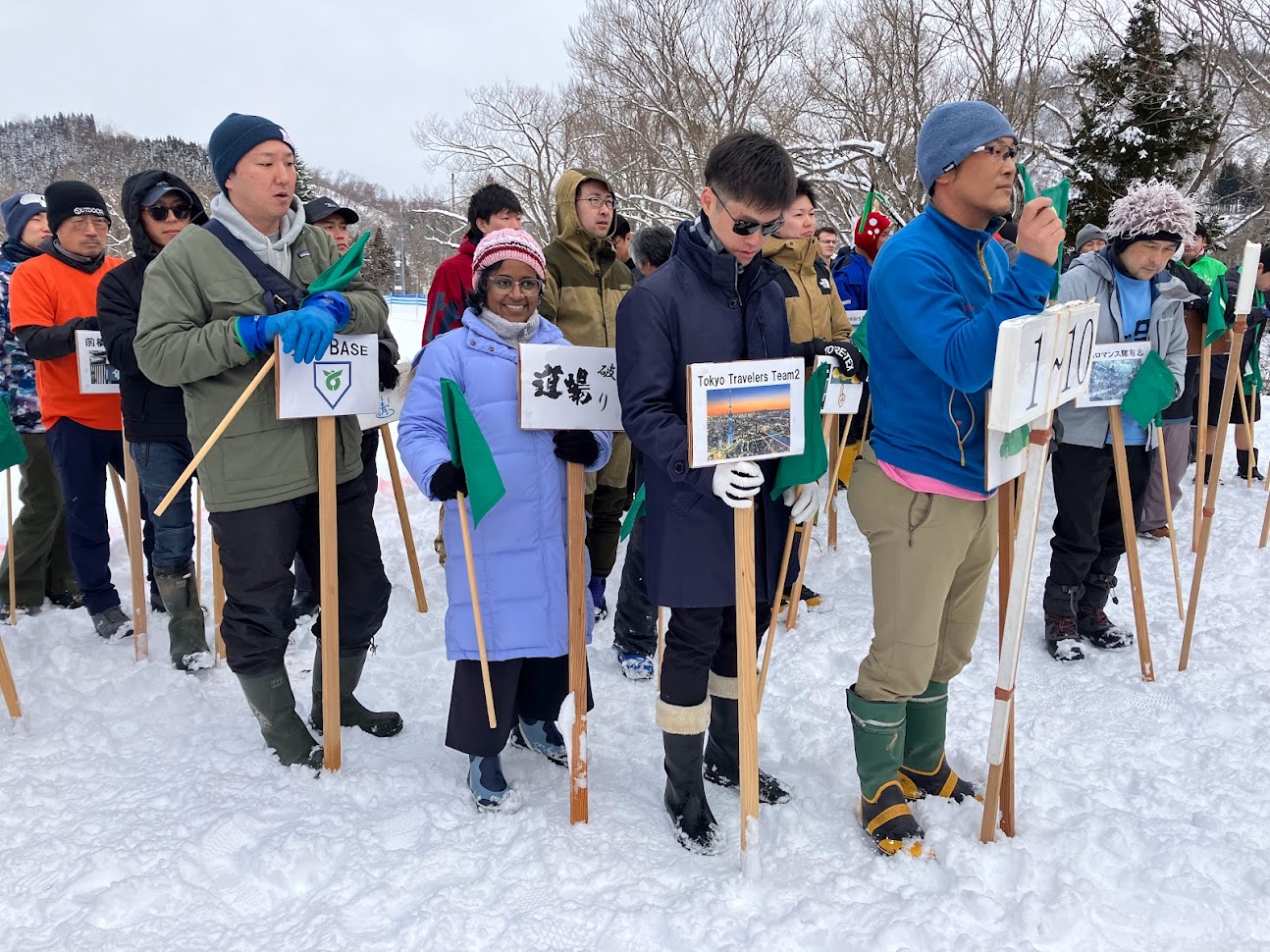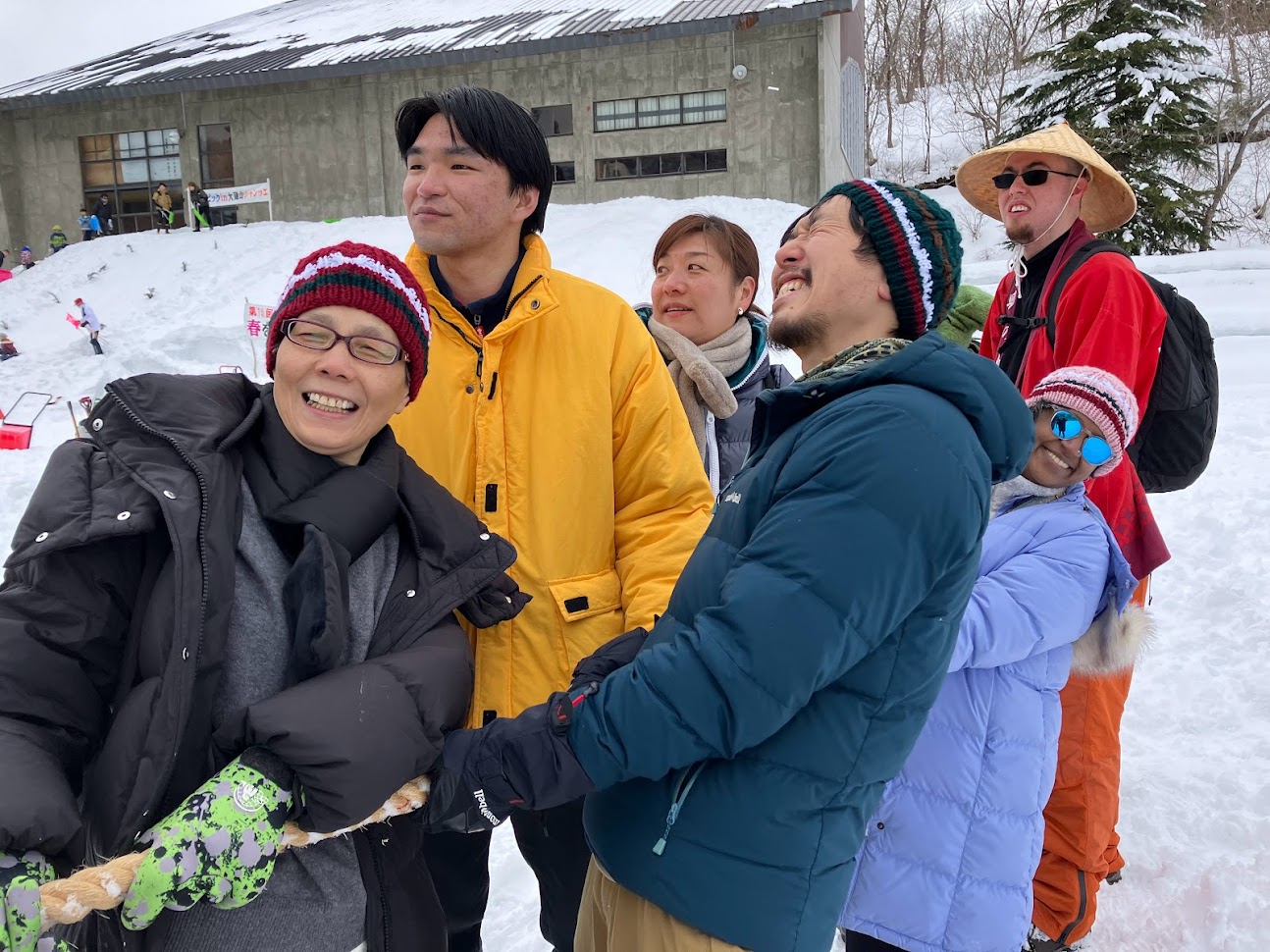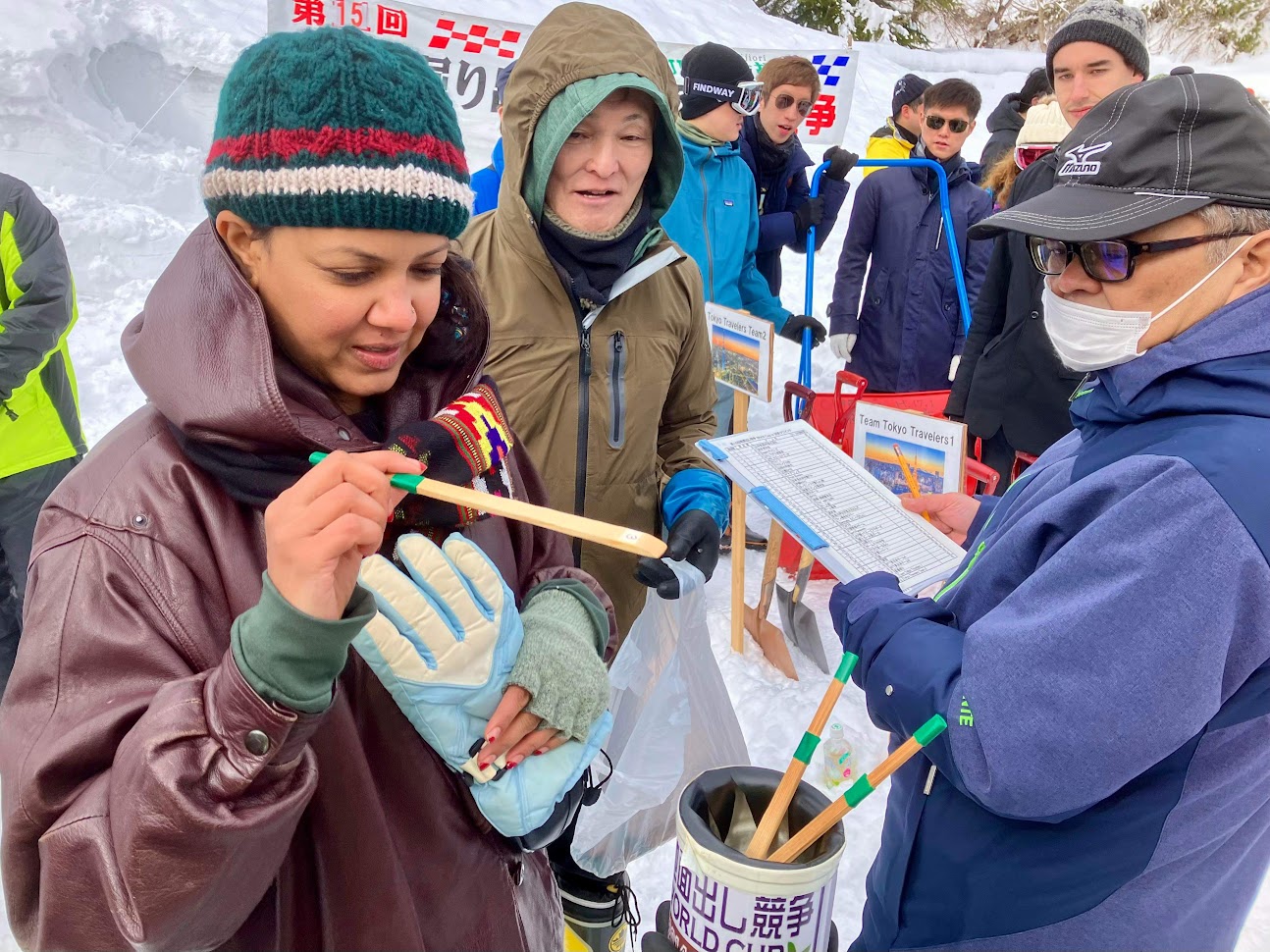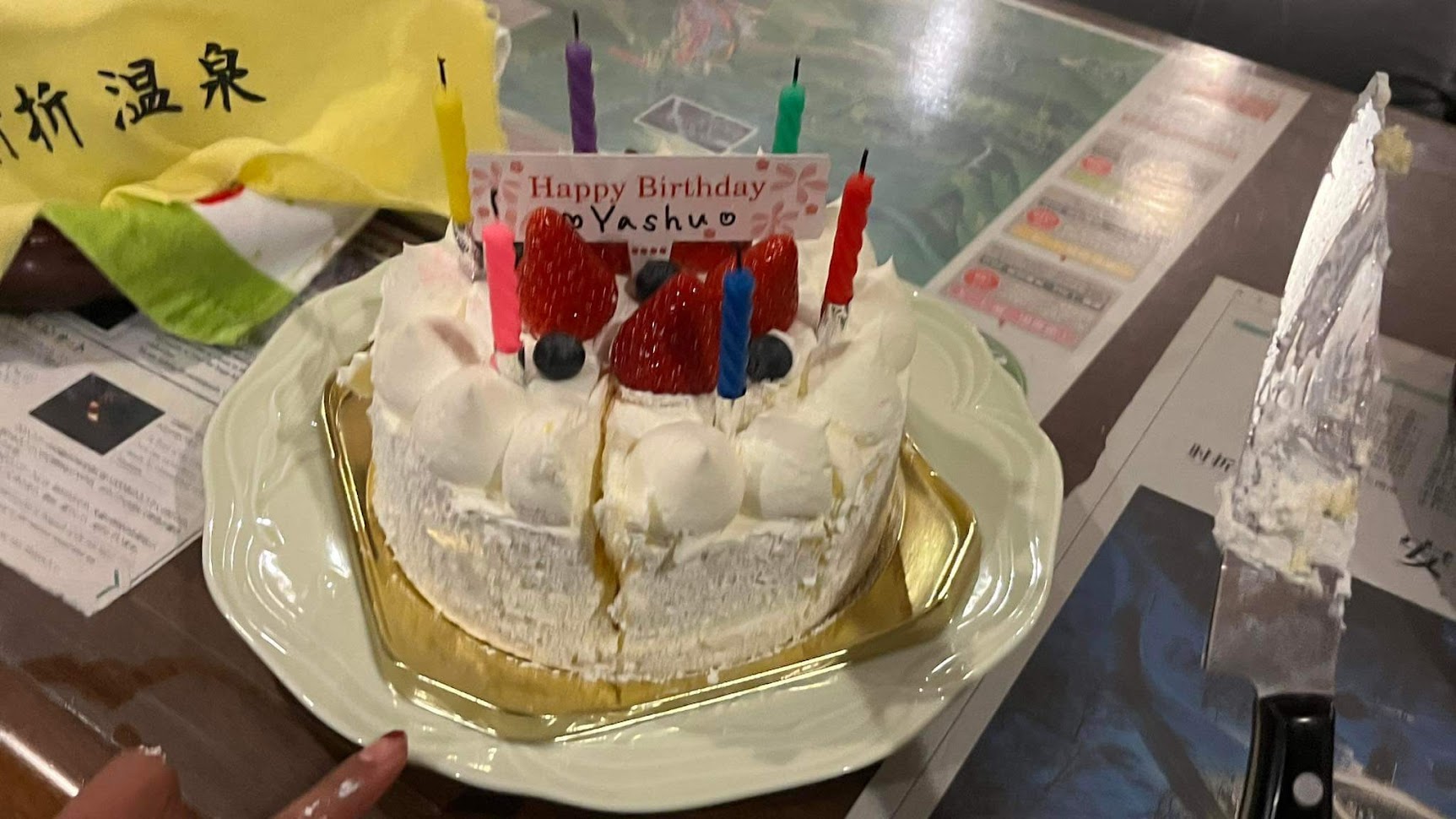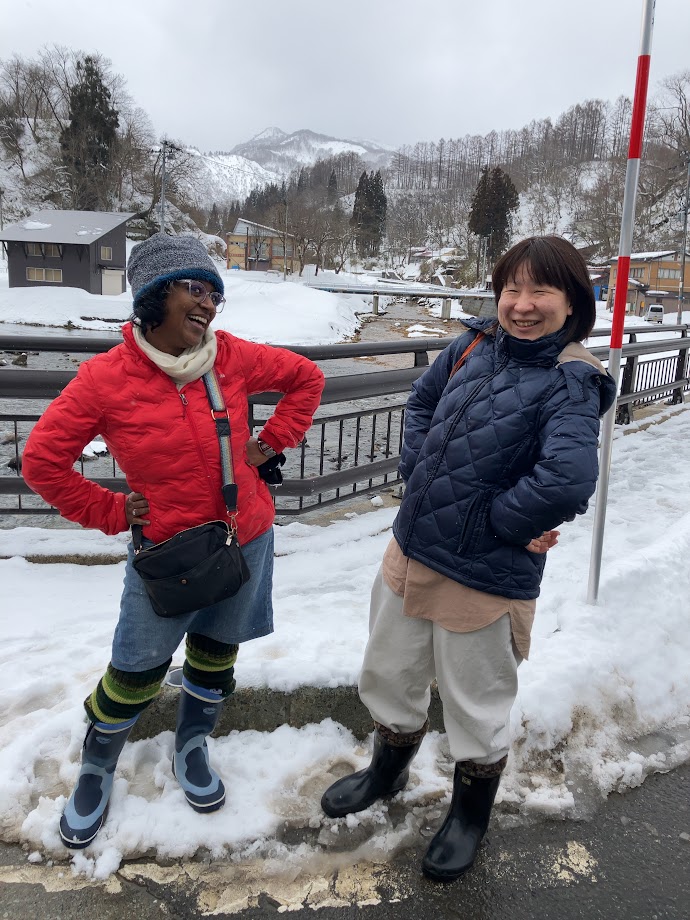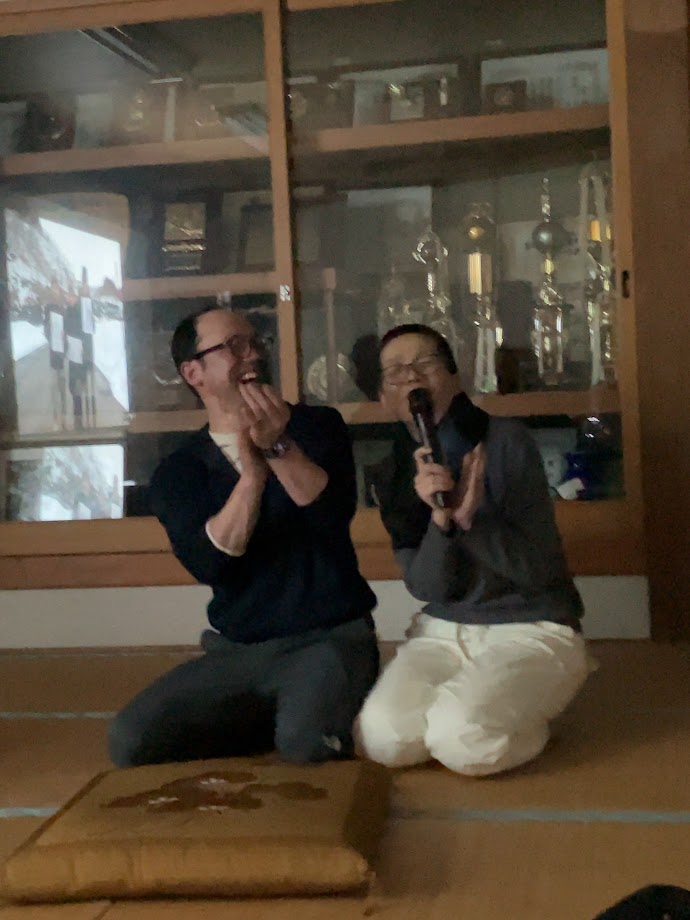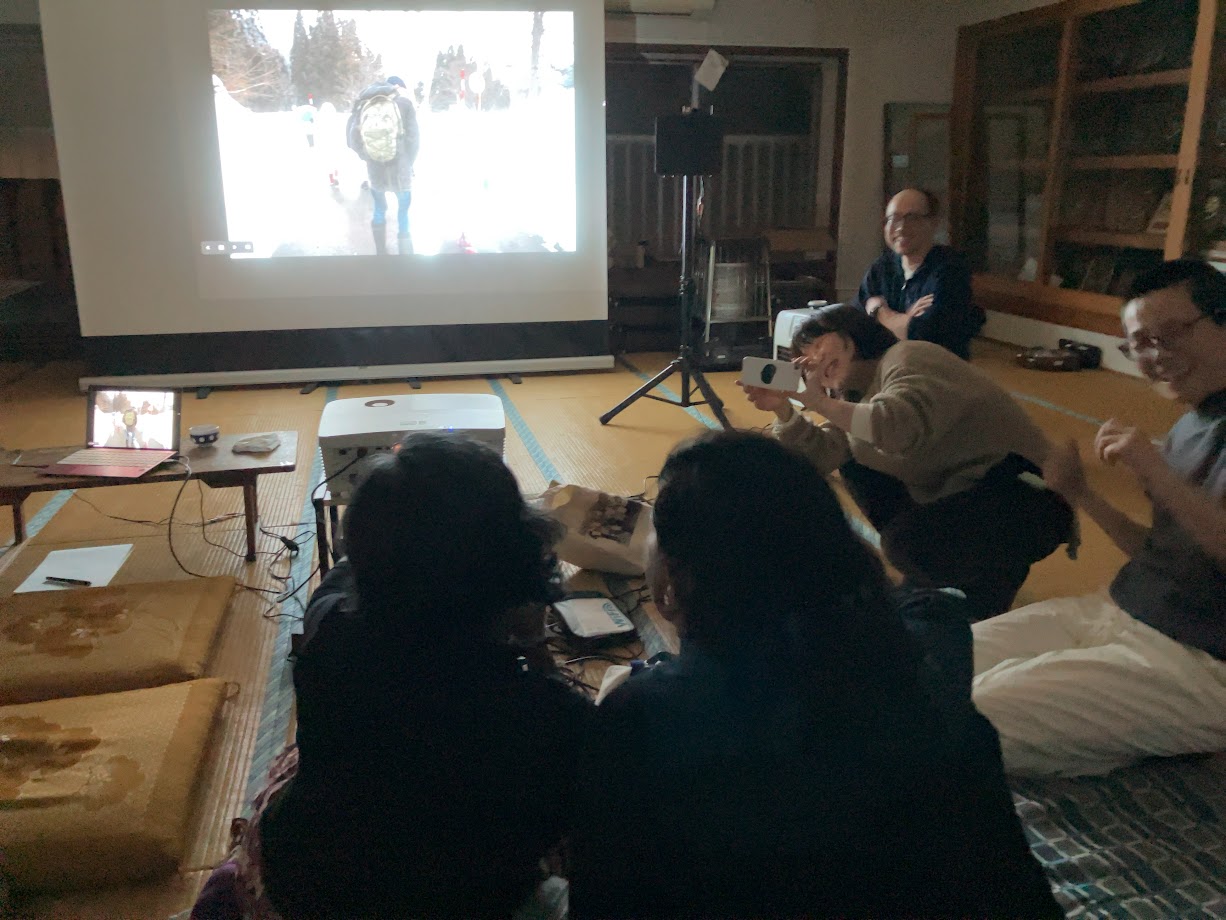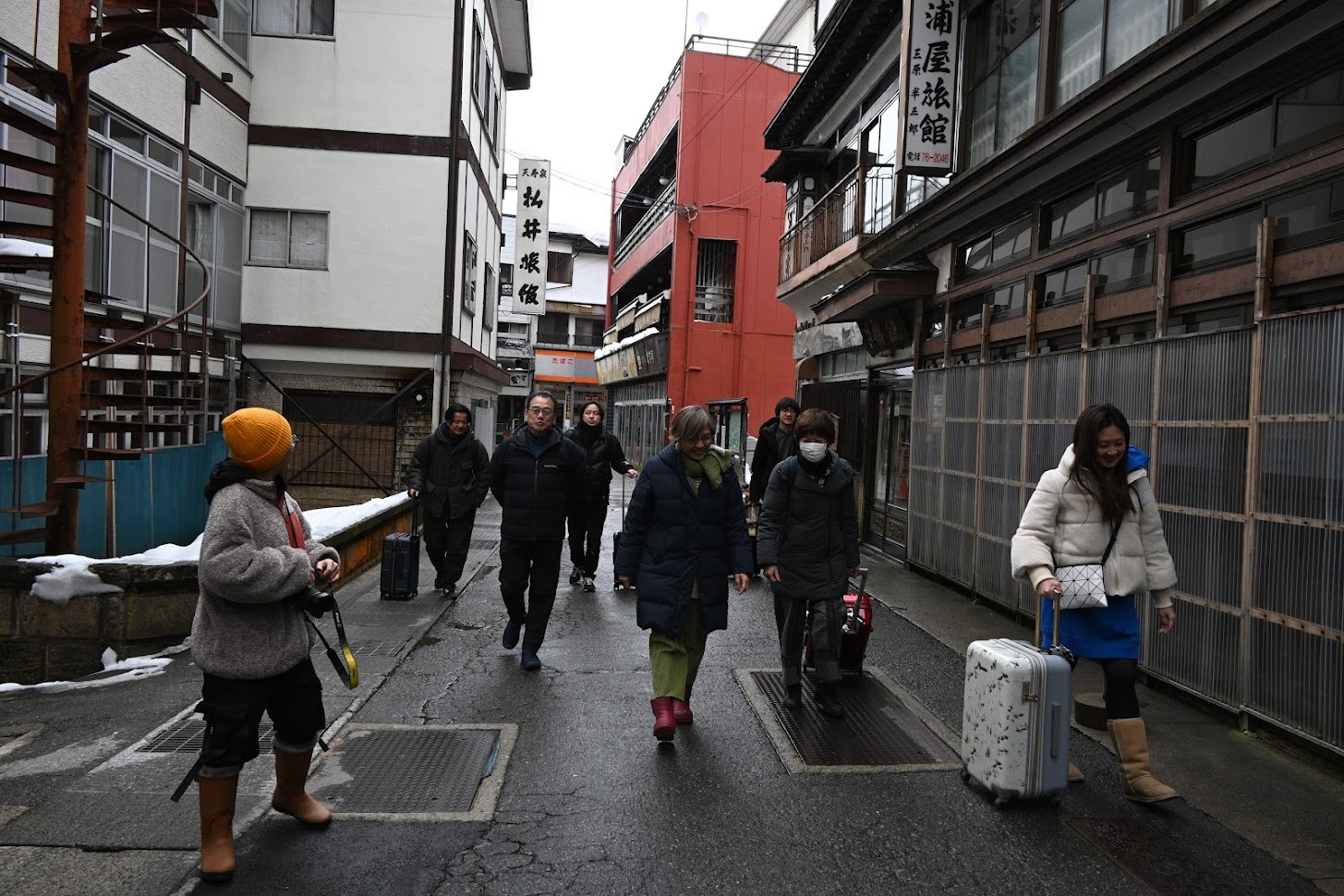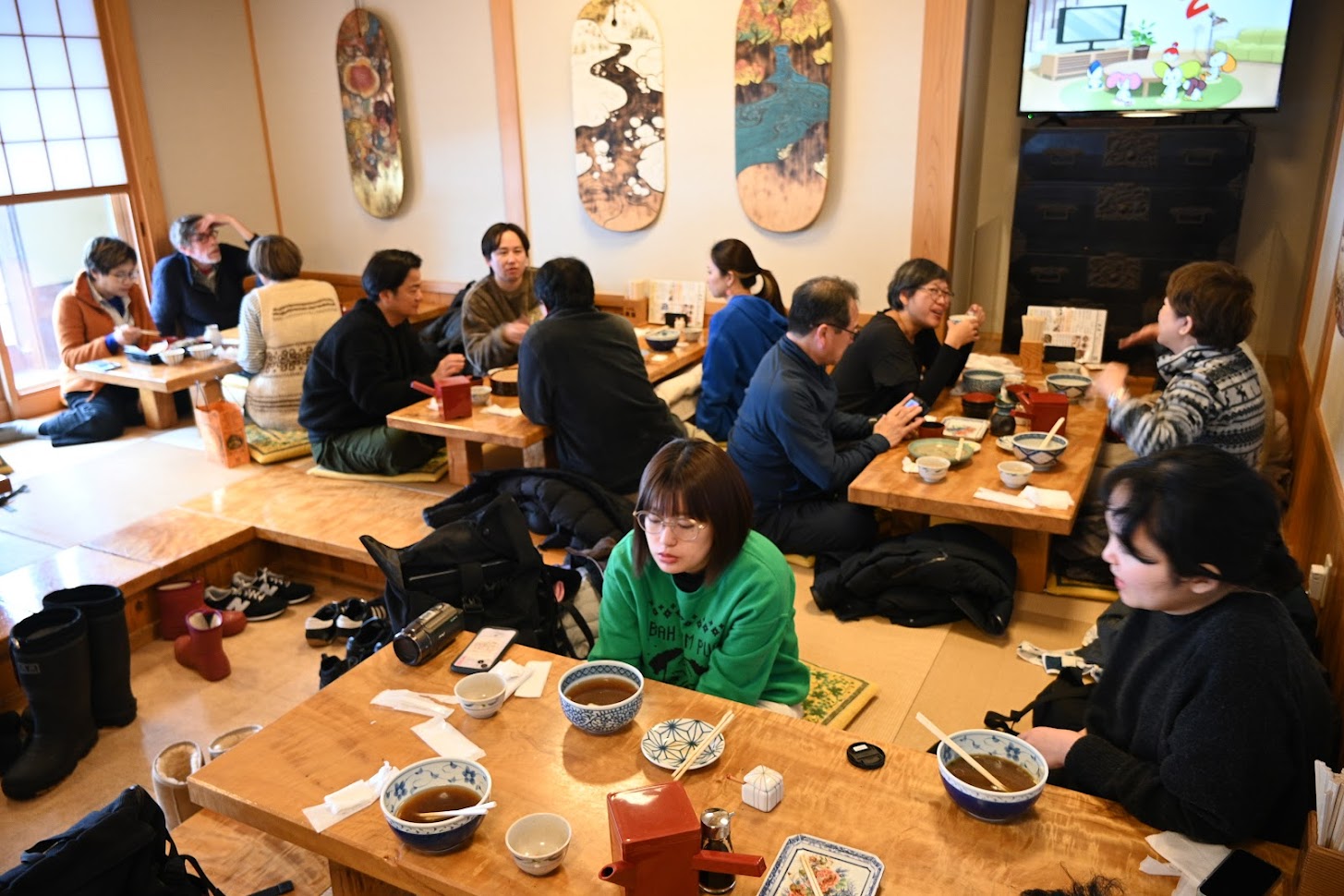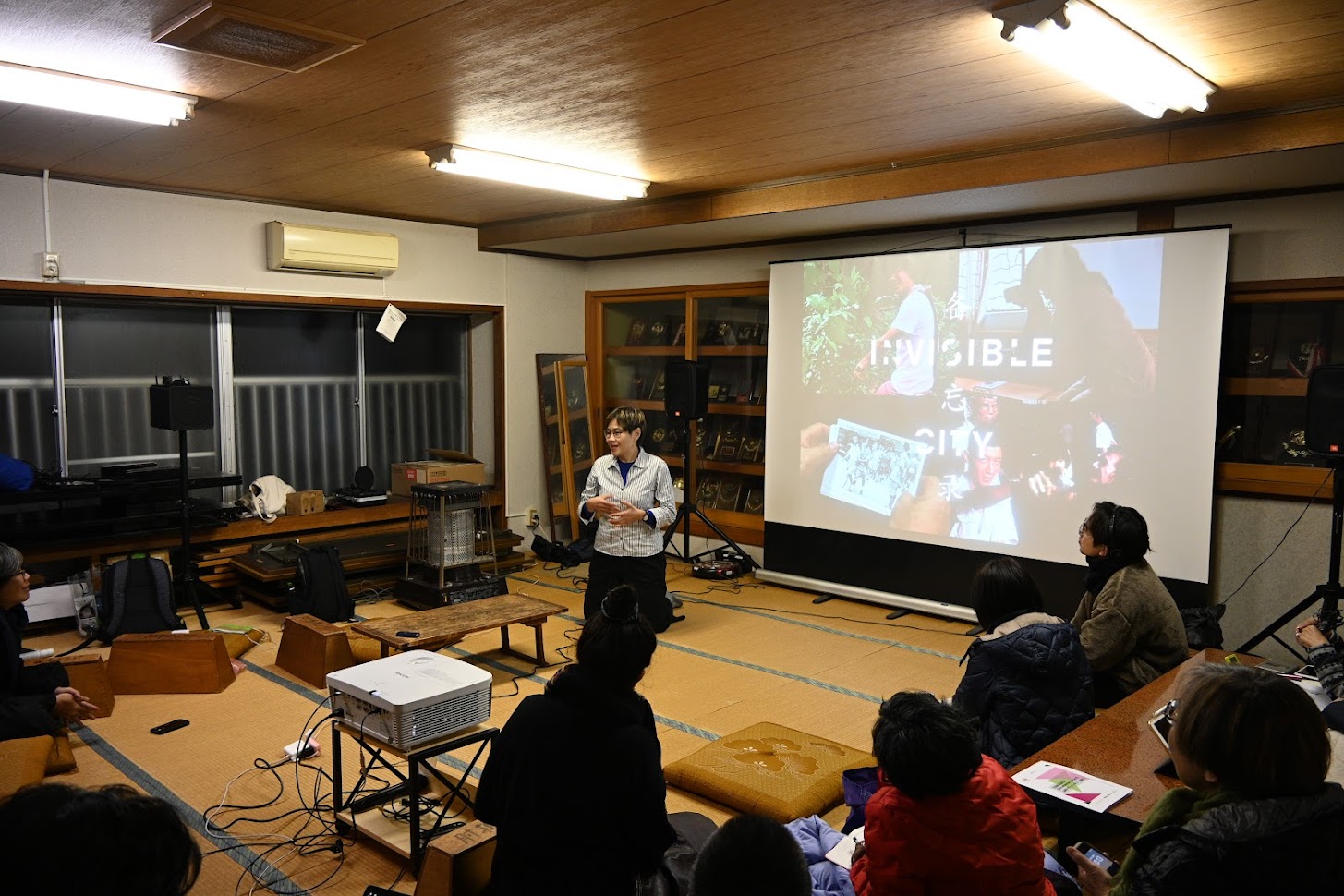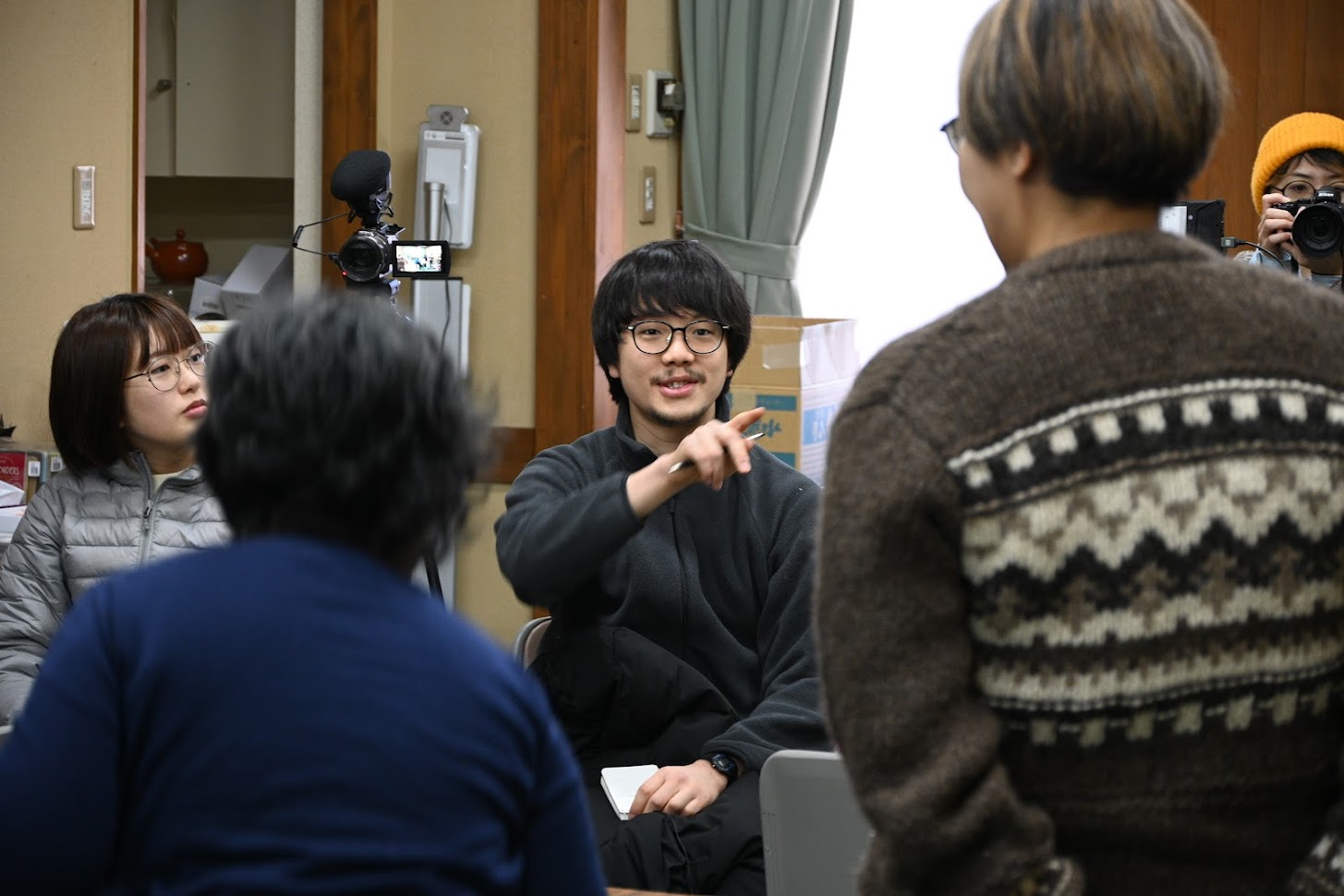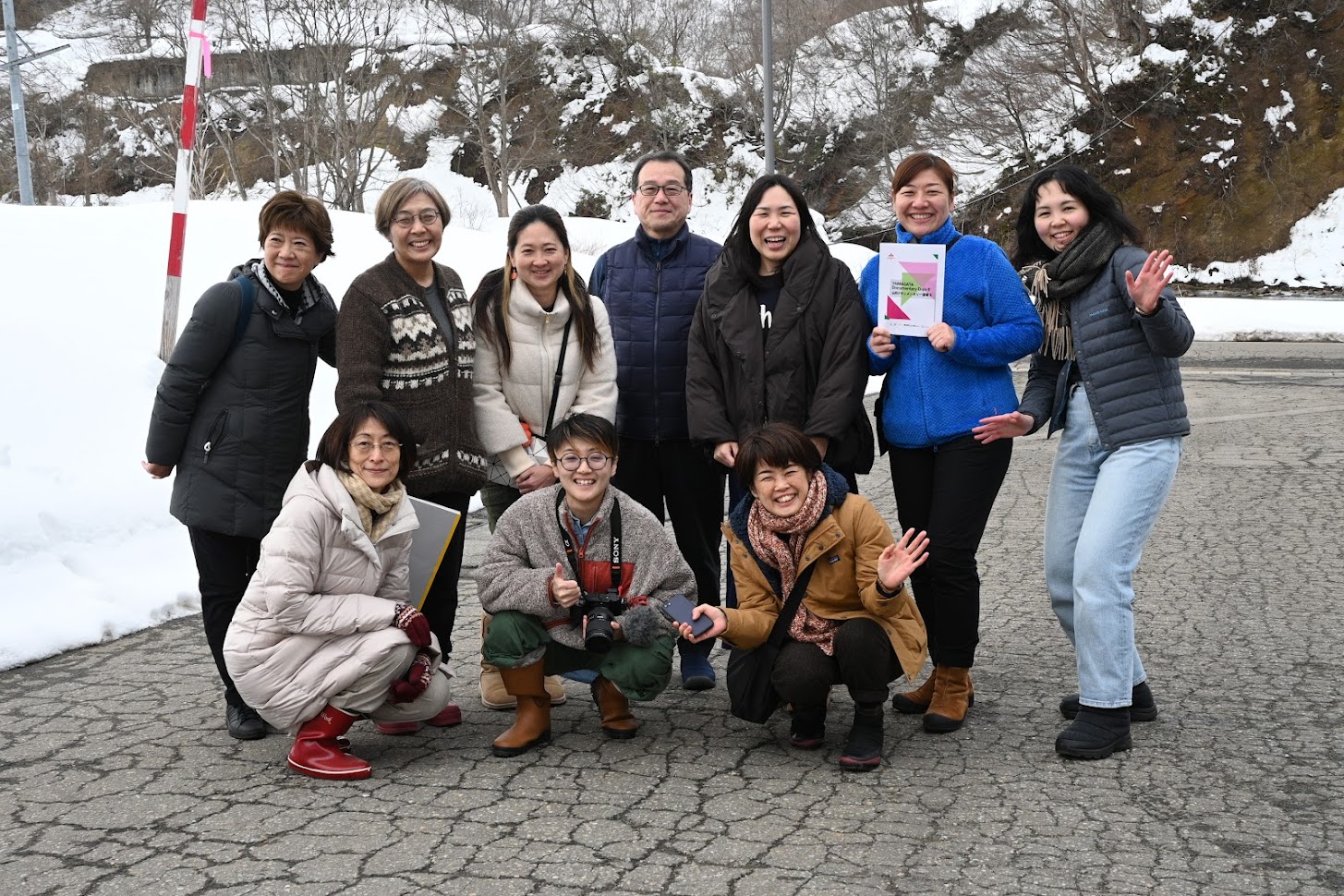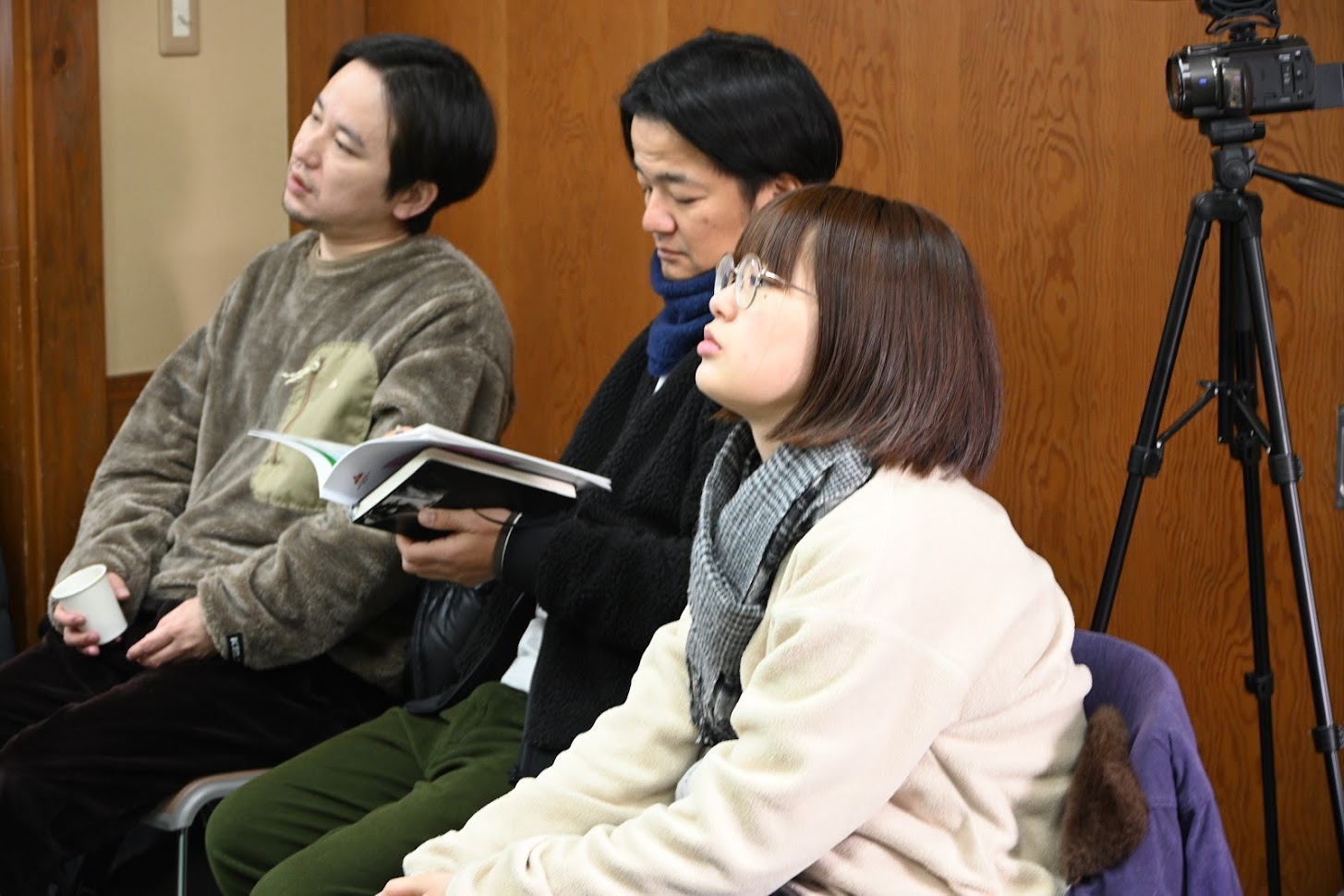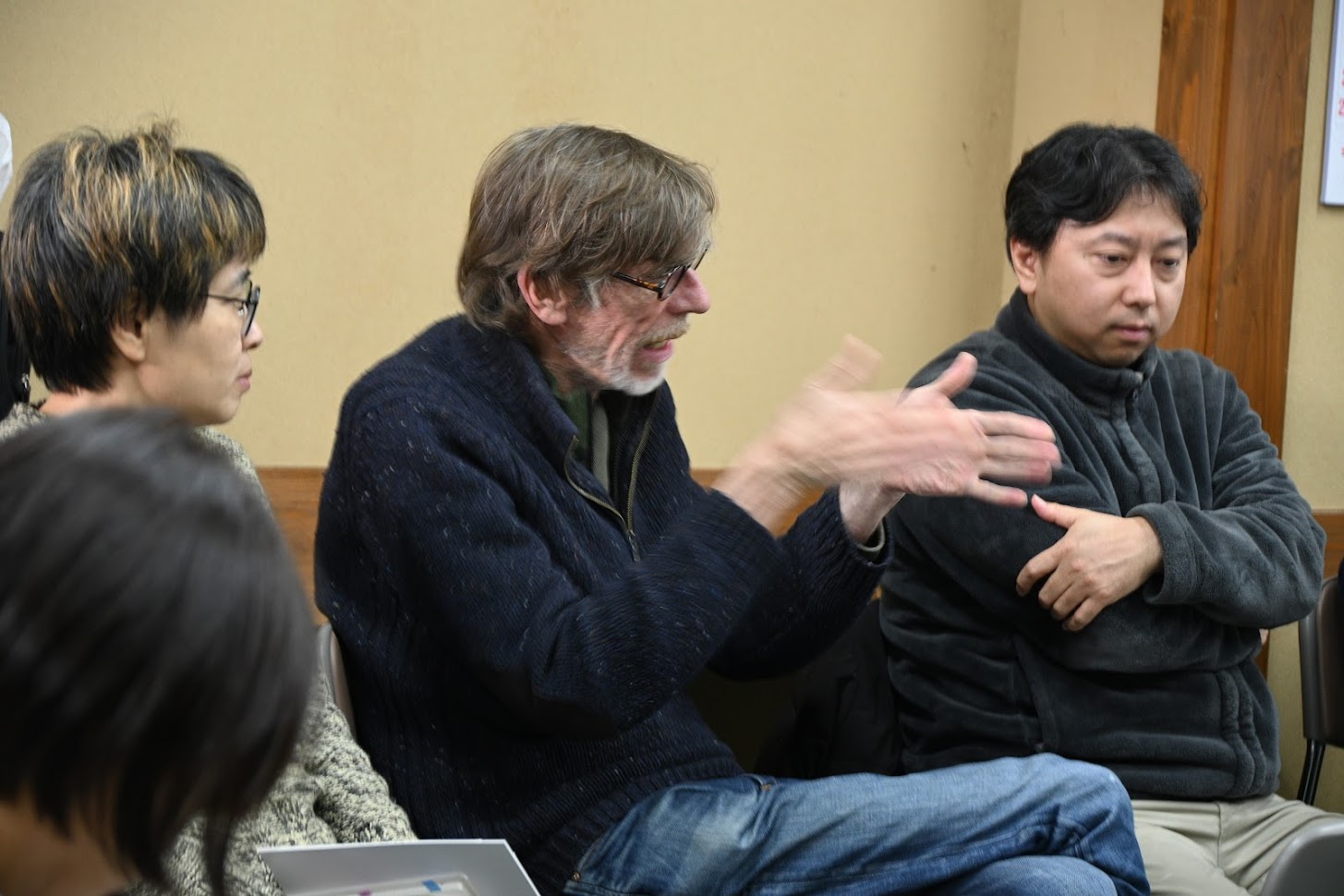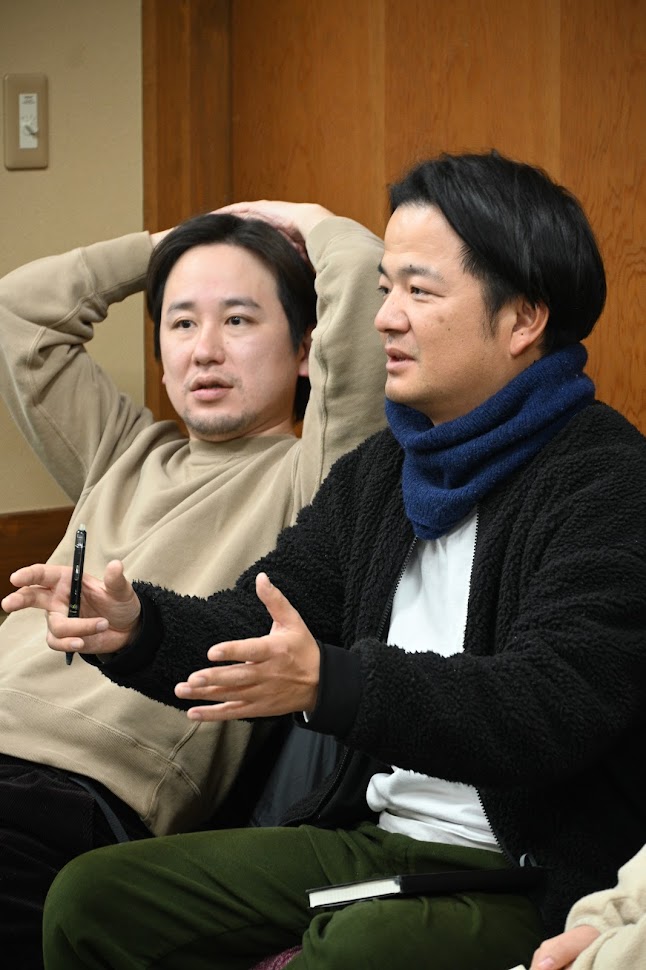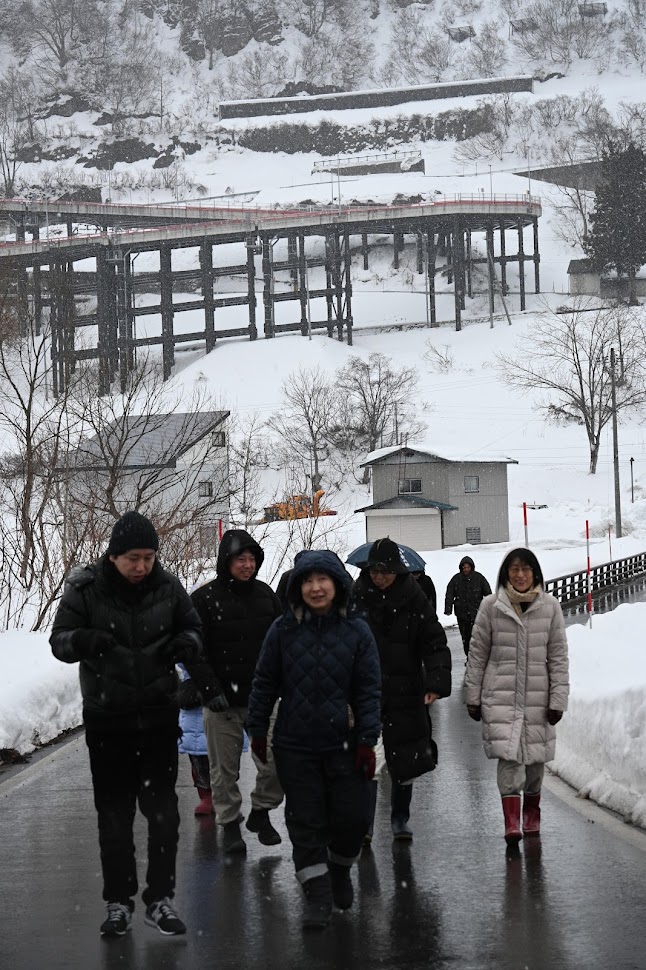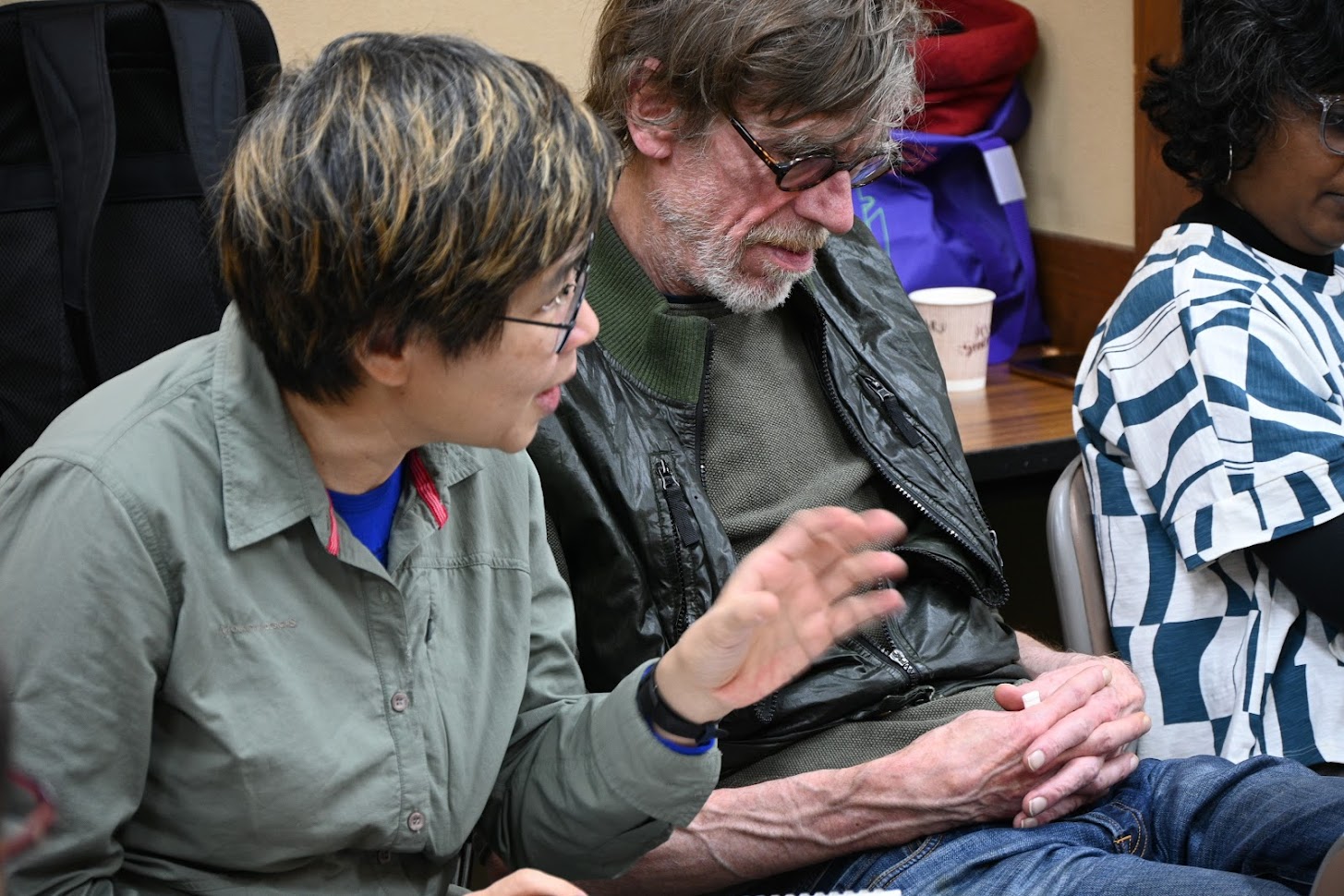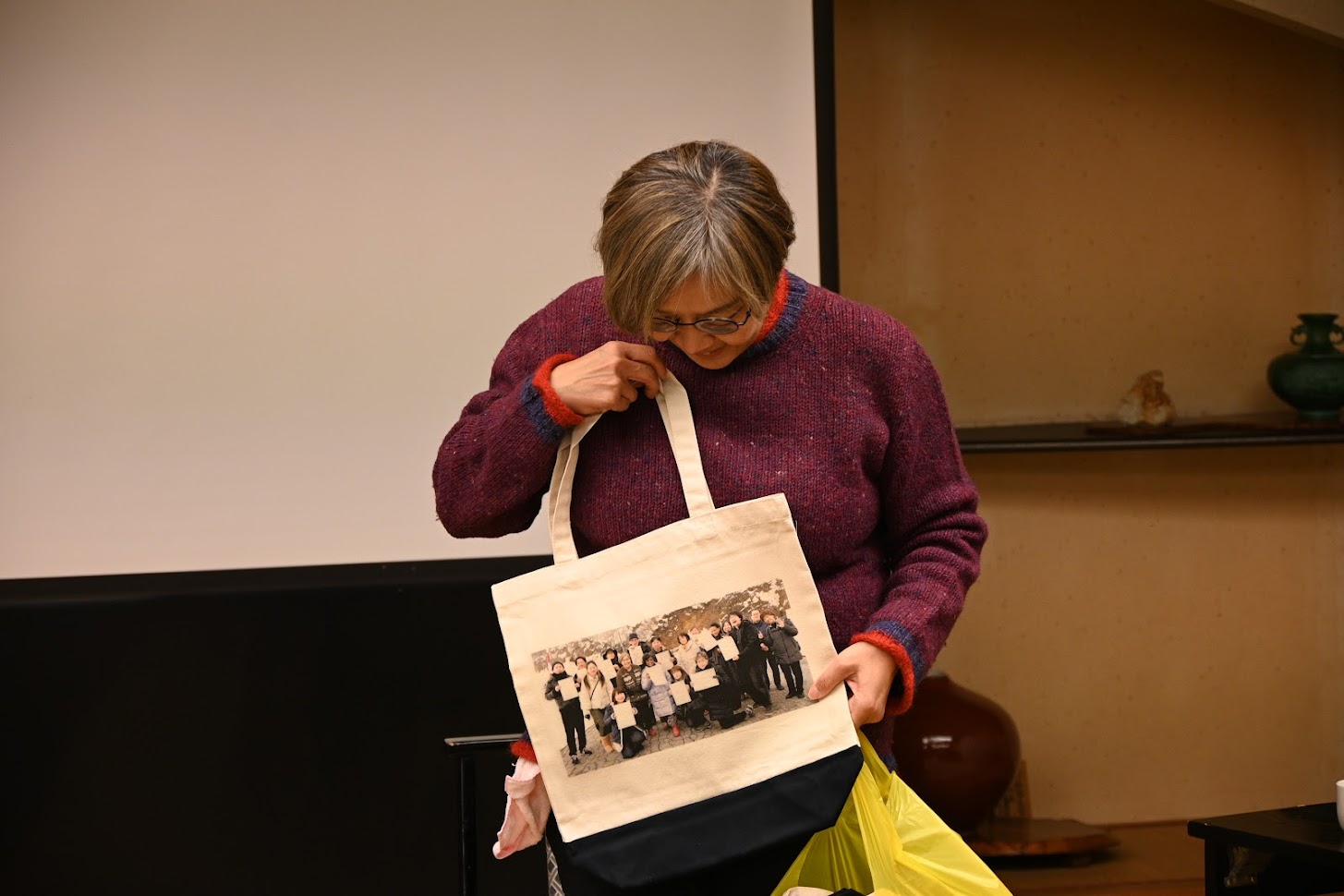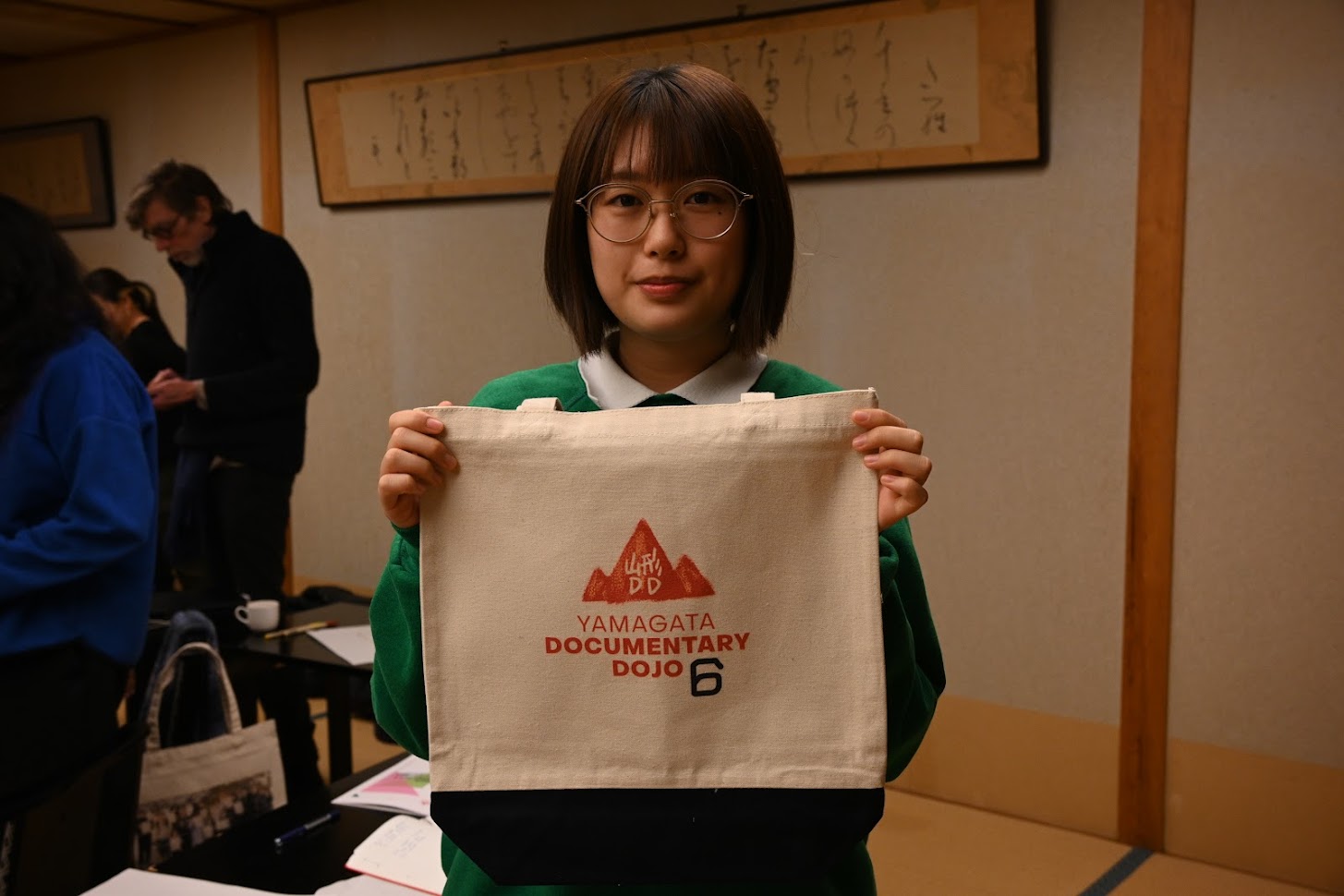

|
[Table of Contents] ◆ AIR (Artists in Residence) program |
The Yamagata Documentary Dojo is an artist-in-residence (AIR) program that brings filmmakers working on new works to Yamagata, in northern Japan, for a long-term stay to deepen their thinking through international exchange. The process of editing and structuring the footage after shooting is decisive in determining the direction of a documentary film. This program provides the time and place to enhance this stage of filmmaking.
There are three main concepts:
(1) Contemplation: A time and place away from the everyday to focus on the work in progress, reviewing it with new eyes and questioning it.
(2) Exchange: Encounter new cultural understanding through friendship with colleagues from other countries, film professionals, and the local community.
(3) Deepen: Present your projects in a structured workshop and discover new perspectives through frank discussion.
For this sixth edition of the Dojo, three teams of four filmmakers from India, China, and Japan stayed in Ohkura Village and Hijiori Hot Springs for four weeks. The first part of the program consisted of an inspiring four-day intensive workshop joined by three mentors and four other filmmakers from Japan, followed by the second half of the program during which filmmakers were given the time and freedom to concentrate further on their works.
This year’s fellows had an especially active experience interacting with the local community and also emerged having formed deep and lasting friendships with each other.
=================
Dates: February 7 to March 3, 2024 (26 days) / Workshop days were Feb. 9 to 12 (4 days)
Locations: Hijiori Onsen, Ohkura Village, Yamagata Prefecture / Yamagata Creative City CenterQ1 (Yamagata City)
Organized by: Documentary Dream Center
Funded by: Society for the Administration of Remuneration for Public Transmission for School Lessons (SARTRAS), Tokyo Doc
With the assistance of: Yamagata International Documentary Film Festival, Ohkura Village Tourism Association, Hijiori Onsen Ryokan Union
Endorsed by: Yamagata Prefecture, Ohkura Village




![]() AIR (Artists in Residence) program
AIR (Artists in Residence) program
Participating artists: 4 filmmakers in 3 teams
= Four-day workshops with the mentors and short-stay filmmakers. Project presentations were made with ample time for Q&A and discussion, and the days were filled with stimulating lectures, screenings, and get-togethers with the mentors.
= The following two days were spent in individual meetings with the mentors, where projects were discussed in depth and obstacles made clear.
= In the next two-week period, hot springs and life with the locals revived the filmmakers’ bodies and souls. They looked at their films with fresh eyes and worked further on structure, editing, and new ideas.
= At the end of their stay, the teams moved to Yamagata City to screen their previous works and interact with the audience. They took place in a wrap-up event where they shared the journey of their four-week stay with the public.
PROJECTS
Eleven Ears
The filmmaker who does not understand Tamil asks her father to translate a collection of poems written by her father’s brother before his death, from Tamil into English and her mother tongue Kannada. She films their conversations as they work together on the translation. The memories and associations that the father recounts as he translates the poems offer thoughtful entry points to subjects that had always felt difficult to talk about. The neighborhood milkman, electrician, real estate agent, and pharmacist also enter the stage in this hybrid documentary film.
Director: Yashaswini Raghunandan (Bangalore, India)

Editor: Arunima Shankar (Goa, India)

To Live
The construction of the Three Gorges Dam on the Yangtze River in China forced the displacement of approximately 1.3 million people living in the vicinity. In the midst of this massive national project, between 1994 and 2012, this series of “Daughters of the River” documentaries were filmed. The project looks at the lives of four women of different age, background, and personality, as they anguish in making life-changing decisions, and waver in their search for ideals while confronted by the face of reality. To Live is the third film of this series.
Director: Feng Yan (Beijing, China)

Spring, on the Shores of Aga
Hatano Hideto became a supporter of the Niigata Minamata disease patient movement in his 20s and has since been spokesperson for the Yasuda Patients’ Association. He instigated the production of director Sato Makoto’s documentary film Living on the River Agano (1992), now a film classic, and sparked a cultural movement called “Souvenirs for the Afterlife” project. This is a record of his never-ending work — while the form of support for disaster victims seem to be changing with time.
![]() Workshop-only participants (4 filmmakers of 3 teams)
Workshop-only participants (4 filmmakers of 3 teams)
The Japan-based filmmakers presented their documentary projects and held group discussions during the 4-day workshop.
HIBATA Hina (Tokyo)
Reflection

ISHIKAWA Taichi (Tokyo)
Talk Roll Wheel

SHIMADA Ryuichi (Tokyo/Director)
The Earth Is Moving Slowly

TOYAMA Shinji (Tokyo/Editor)
The Earth Is Moving Slowly

![]() Mentors
Mentors
Three mentors supported the progress of the film projects through workshop discussion, masterclasses, and one-on-one meetings.
Hata Takeshi (Toyonaka / Film editor and producer)

Tan Pin Pin (Singapore / Filmmaker)

Niels Pagh Andersen (Copenhagen / Film editor)

|
(Pre-event) We converted the film “Snow Poem” (1976) which was shot in Hijiori Onsen, Okura Village from 35mm negative film to digital material for screening, and premiered it at the international film festival. With guests including the film’s rights holders (the director’s bereaved family) and guests from Hijiori, a talk event took place after the screening. Audience attendance numbered 152. |
 |
|
Workshop (2024/2/7 – 12) Four intense days in Hijiori Onsen, filled with presentations, masterclasses, discussions, and workshop exercises. 11 filmmakers and mentors, 10 staff and observers took part. |
  |
|
One-on-one meetings (2/13 – 14) Following the group discussions during the workshop, the AIR fellow filmmakers had individual sessions with the three mentors to review the projects and to converse further. |
  
|
|
Moving house (2/13, 2/19, 2/24) Filmmakers moved accommodations and were housed at four different inns during their stay. This style was devised out of consideration for income distribution in the local community and to offer opportunities for the filmmakers to experience different environments and meet new people. |
 |
|
Movie Night (2/18) Under the Wave, On the Ground (Komori Haruka) |
 |
|
Movie Night (2/20) |
|
|
Yoga Class (2/21) Promoting to villagers using handmade flyers worked when 17 people, young and old, showed up. Led by Arunima Shankar. |
 |
|
Snow Digging Competition (2/25) The Dojo team took part in this famous local event to compete how fast they could dig the usually deep snow underfoot to reach and present a handful of soil. Previous Dojo filmmakers joined the team, but alas with the record-breaking shallow snow, we goaled in last among 41 teams. |
 |
|
Movie Night (2/26) With Each Passing Breath (Kawakami Atiqa) |
 |
|
Yoga Class (2/27) Due to popular demand, an additional lesson was organized. 8 locals took part in a class led by Arunima Shankar. |
 |
|
English Conversation Class (2/28) The lesson was organized by the local community for inn owners and shopkeepers to practice English conversation in role-playing setups. | |
|
Movie Screening and Progress Report (2/29) Living on the River Agano (Sato Makoto) |
 |
|
Progress Reports in Yamagata City (3/1) Moving to Yamagata City, Yashaswini & Arunima, and Feng Yan shared their progress status on their projects and discussed next steps with the others. |
 |
|
Film Showings in Yamagata City (3/2) YIDFF’s public screening event featured Feng Yan’s film Bingai and Yashaswini Ragnandan’s film That Cloud Never Left at Yamagata Creative City Center Q2. Post-screening discussions with around 30 participants. |
  |
|
Wrapup Presentation of Dojo 6 (3/2) Reaching the end of the program, each filmmaker shared their experience through photos and comments, also presenting short films they made during their stay in Hijiori. The public joined in a buffet-style reception afterwards and enjoyed personal interaction with the fellows. |
 |
|
Short film series FACES YAMAGATA The filmmakers made short videos on their smartphones during their Hijiori stay. The films will soon be made viewable online. |
 |
Yamagata Newspaper “Hijiori Warms Up Film Projects” (2024/2/14)

YBC TV / 6pm News Topic “To the World / Yamagata Documentary Dojo Enhances Creativity – Yamagata Culture” (2024/3/4)
https://vimeo.com/926495878/09afb228d4?share=copy

Open call for participants – flyers (Japanese, B5 color)


Booklet (Japanese/English 28 pages)

Short videos about Dojo 6 (2 versions) to be uploaded online shortly
It was a joy to spend four days, from morning to night, thinking about films in a very intense way. It was a valuable experience because the denseness of the time was so different from my daily life. From the discussions, I discovered my own tendencies and unconscious traits that I had never noticed. I now see how my work looks from an outside view.
It was an experience that will provide me with food for thought and inspiration to continue thinking about cinema and to stand up and act (and not only in filmmaking).
It was so encouraging. I sometimes feel discouraged by the huge amount of often unrewarding time that goes into editing a documentary film, but this weekend made me realize that it is also an irreplaceable job that is both joyful and worthwhile.
More than just getting helpful advice for my work, I simply enjoyed discussing with everyone about our works in progress, and it gave me motivation to continue making films.
I had been working alone for so long that I had lost distance from my material. In the course of our discussions, I began to see such possibilities for the film that I had not imagined.
In China, the independent filmmaking community which used to be tight-knit community has disappeared, with many filmmakers going abroad. We don’t know what each other are doing anymore. Alone, I would have given up and said, “Why do I need to make another film.” This was a great gift of encouragement for me.
We formed a sisterhood of mutual support, respecting each other’s space while being together. It grew in an environment where if we got stuck, we could knock on the next room and take a walk together or have a cup of tea to refresh ourselves.
I was not good at English at all, but thanks to the time we spent eating together, I came to be able to communicate and share lots with the others.
An environment where you are creatively individualistic while also sharing a communal environment is similar to the process of making a documentary. Instead of being “canned” in a private hotel room to focus on the films, we are able to be our own person when we discover ourselves while interacting with others.
Creators need both “alone time to think carefully” and “intense time to interact with others”. The dojo had both.
When gazing at a Jizo statue, some people approach it closely and look at it in detail, as I did, but there are also those who would gently put their palms together from a distance and embrace it with a warm gaze. I realized we all have different styles.
Most of all, I was glad to know that there are others who struggle with the same problems as me.
I have always struggled with my filmmaking alone, just rushing about confused. Here I learned a different “way to breathe”. It taught me how to think flexibly and how to endure a state of limbo.
It came at the perfect timing in our film and my career. As adults, we don’t get many opportunities to learn from each other. It is not easy to expose ourselves and be naked like we did this time, but I noticed the strength that comes from that.
The security of our friendship allowed us to share freely, and we overcame the language barrier. I felt like I could overcome any fears I had.
These were fun days. I learned a lot, even as a mentor, and this was one of the top five workshops I have taken part in over the years.







